














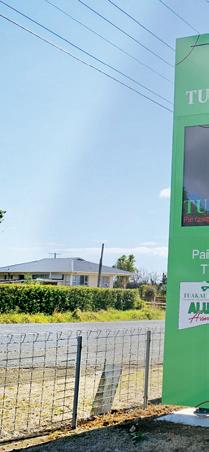


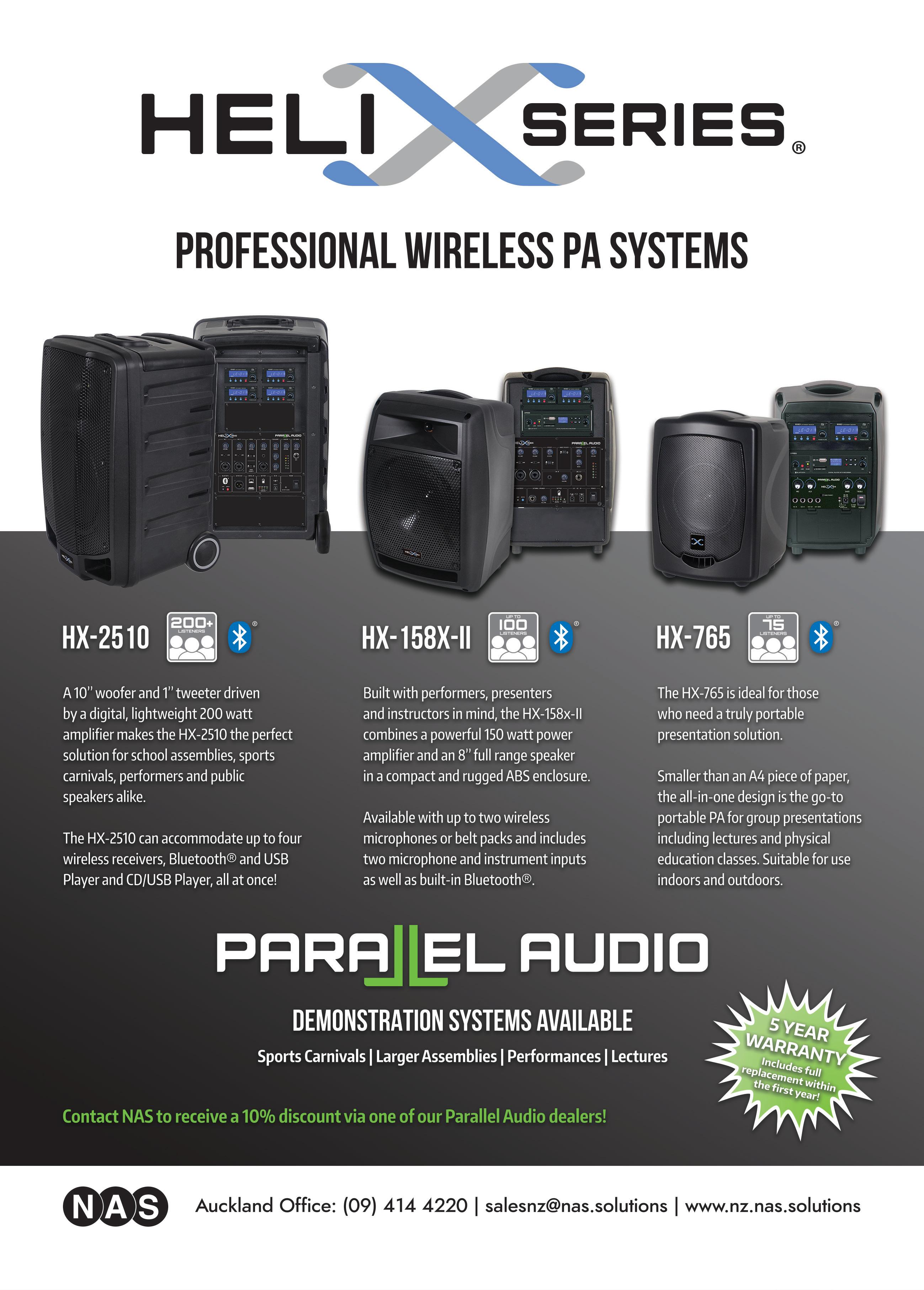






























School News is distributed to primary, secondary and intermediate schools throughout New Zealand by Multimedia Publications New Zealand Limited.
The views and images expressed in School News do not necessarily reflect the views of the publisher. The information contained in School News is intended to act as a guide only, the publisher, authors and editors expressly disclaim all liability for the results of action taken or not taken on the basis of information contained herein. We recommend professional advice is sought before making important business decisions.
Advertising Conditions
The publisher reserves the right to refuse to publish or to republish without any explanation for such action. The publisher, its employees and agents will endeavour to place and reproduce advertisements as requested but takes no responsibility for omission, delay, error in transmission, production deficiency, alteration of misplacement.
The advertiser must notify the publisher of any errors as soon as they appear, otherwise the publisher accepts no responsibility for republishing such advertisements. If advertising copy does not arrive by the copy deadline the publisher reserves the right to repeat existing material.
Disclaimer
Any mention of a product, service or supplier in editorial is not indicative of any endorsement by the author, editor or publisher. Although the publisher, editor and authors do all they can to ensure accuracy in all editorial content, readers are advised to fact check for themselves, any opinion or statement made by a reporter, editor, columnist, contributor, interviewee, supplier or any other entity involved before making judgements or decisions based on the materials contained herein.
School News, its publisher, editor and staff, is not responsible for and does not accept liability for any damages, defamation or other consequences (including but not limited to revenue and/ or profit loss) claimed to have occurred as the result of anything contained within this publication, to the extent permitted by law.
Advertisers and Advertising Agents warrant to the publisher that any advertising material placed is in no way an infringement of any copyright or other right and does not breach confidence, is not defamatory, libellous or unlawful, does not slander title, does not contain anything obscene or indecent and does not infringe the Consumer Guarantees Act or other laws, regulations or statutes. Moreover, advertisers or advertising agents agree to indemnify the publisher and its agents against any claims, demands, proceedings, damages, costs including legal costs or other costs or expenses properly incurred, penalties, judgements, occasioned to the publisher in consequence of any breach of the above warranties.
© 2025 Multimedia Publications New Zealand Limited It is an infringement of copyright to reproduce in any way all or part of this publication without the written consent of the publisher.
PO Box 5104, Papanui, Christchurch, 8542, NZ Phone: (03) 365 5575 Fax: (03) 365 1655 mail@schoolnews.co.nz www.schoolnews.co.nz
EDITOR
Gemma Easton, editor@schoolnews.co.nz
INDUSTRY REPORTER
Naomii Seah
DESIGN & PRODUCTION
Richard McGill, production@schoolnews.co.nz
ADVERTISING
Dee Dawson, advertising@schoolnews.co.nz
CONTRIBUTORS
Bernadette Hall
KEY


Teacher’s Desk
05 Editor’s Note: End of year organising and planning for 2026
06 Special Report: The behaviour problem: Standardised curriculum, standardised tests, standardised... behaviour?
10 Tumuaki Principal Speaks: TuakanaTeina time at St Francis Xavier – A living expression of whanaungatanga and ako
14 Profile: Ngā Ahikāpuni –Reigniting fires in schools
18 Sunshine Books teams with home-grown talented writers
19 Literacy: The key to unlocking student potential
24 A structured approach to building student writing success
26 Literacy success for all learners through targeted and tailored support

28 From engineering to education for teacher – Thomas Schaare
30 Choosing effective PLD for 2026
32 Leading with purpose: A transformational learning journey for school leaders
Administration
33 Quality without compromise for Pinehurst’s new audiovisual system
Teaching Resources
34 Mindfulness supports academic performance in classrooms
Health & Safety
36 Electronic access systems for safety, security and convenience
38 Hope for the best, plan for the worst: Essential first aid
Property
44 Plan, design and fit-out the perfect shaded area
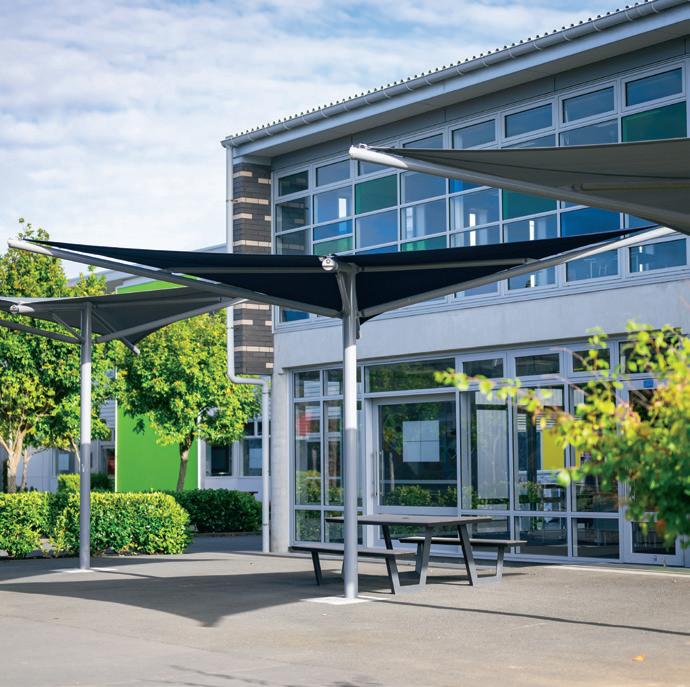
Welcome to the final edition of School News for this year!
I was thinking recently about all the end-of-year events that schools have to organise. When I worked in schools, a big part of my job was helping to organise these events. Of course, it was hard work and at times very stressful, but the joy these events brought to everyone in the school community—students, teachers, parents, families and even prominent community members—made it all worth it.
If you’re deep in the trenches, choreographing actions for your Year 3 class to perform while singing Rudolph the Red-Nosed Reindeer, searching for images for a year-in-review slide show, or finalising prize winners to have certificates printed, remember

Gemma Easton Editor, SchoolNews editor@schoolnews.co.nz
how much your school community appreciates your efforts.
Many of you will be in planning mode for 2026, thinking about ways to get the most out of your teaching practice and your tamariki next year. We’re excited this edition to bring you an
Archgola™ has an unbeatable reputation for o ering a quality all-inclusive package
Full-service o er includes a consultation, providing certi ed engineered designs, arranging council consents through to a quality installation.
Contact your local Archgola™ team to discuss your school shelter needs!
0508 272 446 / ARCHGOLA.CO.NZ
Education Outside the Classroom supplement, full of suggestions for meaningful EOTC experiences. We investigate the benefits of a range of EOTC activities, including visits to galleries and museums, school camps and excursions, and adventurebased learning incursions that bring the fun to your school.
We’ve also included a feature on professional learning and development. Ongoing upskilling and training is essential for all educators to remain on top of their game. With changes to the curriculum in recent years, the increasing prevalence of AI in the classroom, and the constant evolution of technology, PLD might be more important than ever.
Our Special Report for this edition tackles an issue that is much discussed in education circles: behaviour. Some behaviour
policies and guidelines are moving toward ‘traditionalist’ approaches, including stand downs, suspensions, exclusions and expulsions to manage behaviour concerns.
Are these approaches, though, effective? Students from a range of individual contexts turn up to school each day, with many different family, health, wellbeing and other factors influencing their life. A one-size-fits-all approach to behaviour that fails to consider students as people, and not just a name on the roll, may do more harm than good.
I hope you all enjoy the end- ofyear celebrations, graduations, carol evenings and all the other joy-filled events at your school or kura. Hopefully, the holidays won’t whizz by as quickly as the rest of the year seems to have!






By Naomii Seah, Industry Reporter
The past few years have seen rapid and dramatic shifts in New Zealand’s education system with the aim of addressing national issues like educational equity and achievement decline.
Since coming to power, the current government has implemented several education policies such as compulsory reading, writing and maths teaching time; a school cell phone ban; a new “knowledgerich” curriculum; the end of modern learning environments; and structured ways of teaching for core subjects like reading and maths.
These policies herald a shift in the values and ideologies that underpin our education system toward a camp of educators known as “traditionalists”, who advocate for a model of education characterised by a focus on academic achievement, standardisation, order, and an emphasis on the teacher’s authority.
Overseas “traditionalist” education leaders and thinkers are becoming influential amongst policymakers, as they promise to quickly and effectively address many of the

Instances
problems, real and perceived, in our education system.
Of these, one of the biggest is the question of student behaviour, with incidences of disruptive and even violent conduct at schools regularly making headlines. Education Minister Erica Stanford has promised that recent policies will raise national achievement and close equity gaps. Now, some educators are turning to traditionalist ideas of behaviour management, which promise to restore order to classrooms and create ideal learning environments.
A 2024 research report from the Education Review Office (ERO) titled Time to Focus: Behaviour in our Classrooms outlined the extent of challenging behaviours teachers face in New Zealand. It found that New Zealand students were some
of the worst behaved in the OECD, and that behaviour has worsened in the past two years. Classroom behaviour matters because of its impact on learning environments. Settled environments mean teachers spend more time teaching rather than managing behaviour, and students progress more quickly and are more likely to enjoy learning. Unsettled classrooms also impact teachers’ health, and the overall school culture.
Challenging behaviours reported by teachers included students calling out and distracting others, and physically harming others or damaging and taking property. Almost half of teachers spent 40 to 50 minutes a day addressing challenging behaviour, and most teachers believed student behaviour impacted academic progress and students’ enjoyment of school, which has flow on effects
for attendance. The report also found many teachers were not prepared to manage behaviour in the classroom and struggled to access support, impacting their morale and the likelihood of leaving the profession.
The report notes there are many influences on students’ behaviour that are outside of teacher or school control, including an individual’s temperament, development, emotional regulation and communication skills, and disability; family factors like home environment, stress, parenting and mental health; social and peer dynamics; trauma; cultural factors; and safety and accessibility of support services. Though the causes are complex, the ERO says knowing and understanding student context is an important aspect of managing classroom behaviour.
Suspensions, exclusions and expulsions are considered a means of last resort in response to serious or sustained negative behaviour. However, the latest data shows that in 2024, expulsions in New Zealand rose to their highest numbers since 2020, and more secondary students were stood down in 2024 than in the past five years.
The most common reason for stand downs continues to be peer physical assault. Stand downs are associated with
negative life outcomes, such as leaving school early, poor health, unemployment and offending. The likelihood of these outcomes increases the younger a student is first stood down, suspended or excluded.
The ERO’s accompanying good practice report recommends a mix of proactive (encouraging good behaviour) and reactive (discouraging bad behaviour) approaches to classroom management, including knowing and understanding individual students and the influences on their behaviour; using a consistent approach across the school; using classroom strategies to support behaviour expectations; and responding effectively to challenging behaviour.
Behaviour expectations are set schoolwide, and stem from the culture and values set by leadership in collaboration with the community. Teachers should learn classroom management techniques and skills, including relationship building, effective responses and de-escalation. Schools should also have a clearly defined procedure for escalating behavioural issues beyond the classroom if necessary.
Over two fifths of schools in Aotearoa New Zealand use the Positive Behaviour for Learning Schoolwide (PB4L) framework. The PB4L framework takes a proactive approach to behavioural management. It operates on the principles that positive behaviour can be learned, that environments influence behaviour and are changeable, and that positive behaviour is important for engagement, wellbeing and achievement. Its three-tiered approach encompasses universal, targeted, and individualised behavioural supports for schools, and it emphasises a restorative practice to address incidences of negative behaviour. The PB4L framework operates on the understanding that student wellbeing and behaviour are linked, therefore addressing wellbeing as an important part of behaviour management.

A 2016 review of the PB4L framework in New Zealand found that it was successful in achieving significant reduction in negative behaviour and associated increase in positive behaviour. Children were shown to respond well; the framework was associated with better opinions of the school, increased motivation and academic gains.
Behavioural support services for schools include resource teachers of learning and behaviour (RTLBs), who support ākonga in Years 1 to 10. There are also online resources available on the Inclusive Education website, which guide educators on how to provide inclusive support for a range of needs. These resources are available on the Ministry of Education’s website under the section “Behaviour Management”, underlining New Zealand’s current, holistic, inclusive and wellbeing informed approach to behaviour management frameworks. Current frameworks in New Zealand are well-aligned with best practice models supported by local and international evidence, yet it seems instances of dysregulated behaviours are increasing in our classrooms. Taking cues from recent policy direction, some educators are
turning to traditionalist, “zerotolerance” models of classroom behaviour management.
Many of the recently instated education policies in New Zealand mirror UK policies of the last decade. Both Stanford and Prime Minister Christopher Luxon have toured the UK and its schools and been impressed with the education system.
Former UK Minister for Schools Sir Nick Gibb is currently consulting with Stanford, and prominent education leaders from the UK and US have toured New Zealand and Australia, bringing their ideas down under.
Gibb served under the Conservative government in the UK, and oversaw reforms such as introducing phonics, a “knowledge-rich” curriculum and “more rigorous” exams— policies which echo National’s recent mandates. His reforms have been credited for lifting the UK’s achievement in English and Maths compared to other OECD countries.
However, in 2023, a government report into the UK’s 2022 PISA results found that after adjusting for sample bias, England’s academic achievement has not changed significantly from

2009. Additionally, students are reporting the second lowest levels of life satisfaction in the OECD, and teacher shortages are impacting students. Socioeconomic achievement gaps have not closed, and reforms have been criticised for worsening youth mental health.
Under Gibb’s guidance from the 2010s, schools in the UK enforced a “no excuses” or “zero-tolerance” behaviour policy, and teachers were given expanded power to “sanction” students for perceived misbehaviour. On its face, this approach appears consistent with many of ERO’s good practice recommendations, like having a consistent wholeschool response. However, the approach has been criticised for being overtly punitive, authoritarian, inflexible and lacking nuance or consideration of the underlying factors for perceived misbehaviour.
National guidance in the UK directed schools to create a “behaviour curriculum,” where students are taught expected standards of behaviours. A zero-tolerance approach usually involved universal and automatic disciplinary measures such as detentions for infractions like lateness, wearing the wrong uniform, or speaking in corridors. Serious misconduct could result in automatic exclusions, without exception.
This pattern of setting and reinforcing expectations was promised to transform behaviour in schools. In practice, the approach led to children with additional needs, or those struggling with familial, financial or social issues being severely punished.
At the 2019 National Education Union conference in the UK, teachers called the approach “inhumane”, and one said it was “child abuse”. One common sanction was the use of “consequences booths” where children were isolated. In one case, a girl with autism spectrum disorder was put in isolation for over a month, where she attempted to take her own life.
Under the “zero-tolerance” approach, England recorded record numbers of suspensions and around 40 student expulsions per day between 2015 to 2017.

The poorest students, and those with additional needs accounted for most of the expulsions. Figures showed that black Caribbean students were three times more likely to be excluded compared to the whole school population.
In 2019, a report from the Education Endowment Foundation (EEF) found there was no evidence to support a “zero-tolerance” policy and recommended a focus on developing strong teacherstudent relationships and understanding of a child’s context—an approach in line with our current settings.
That same year, there was a call from an Oxford academic to adopt trauma informed approaches to address disruptive behaviour, drawing on local research and case studies which found this approach had positive impacts on classroom behaviour and wellbeing.
Though a zero-tolerance approach has been widely condemned in the UK, it’s not surprising that New Zealand educators may be seduced by its promises, given the data that shows behavioural challenges are rising and so are associated stand down and
exclusion statistics. The zerotolerance approach promises to eliminate disruptions in classrooms through enforcing total compliance. But if the goal is to reduce stand downs and exclusions, and avoid associated negative life outcomes, research suggests that part of the solution lies with changing adult attitudes, expectations and perception of children’s conduct.
Disruptive behaviour is often seen as the fault of the child, whereas evidence shows adverse incidents often point to unmet educational needs, especially for children with additional needs, which may be undiagnosed.
Additionally, adverse behavioural incidents in the classroom occur in the classroom context, which is shaped by teachers, implying a shared responsibility.
As Australian researcher David Armstrong writes in his 2018 paper, “Professionals cannot abstract their role and their relationships with students out of reciprocal interaction: behaviour only occurs within the context of relationships.”
Armstrong goes on to posit that burnout in the teaching workforce could be a causal factor in disruptive student behaviour, causing a negative cascade whereby stressed teachers are less able to create positive classroom
environments, and increased instances of poor behaviour raise teacher stress.
Importantly, international research has also shown that a student’s anticipation of success and perceived self-competence is associated with on-task behaviour and higher motivation. Conversely, when students perceive schoolwork as less relevant, off-task behaviour and opposition to teachers increases. This suggests that it’s not only the school environment that matters, but a school’s pedagogy and curriculum itself. If students are not set up to succeed in a system that is not designed for them, research suggests they are more likely to be disruptive or withdraw altogether.
Notably, the increase in New Zealand’s stand downs and exclusion statistics does not necessarily reflect changes in student behaviour but could reflect changes in how schools perceive and respond to behaviour. The PB4L model is based on a framework developed in the US, which has also seen a rise in stand downs and exclusions statistics. Research there has shown educator attitudes may have hindered the model’s implementation and therefore success, leading to a fallback on stand downs and exclusions as a response to perceived misbehaviour.
It does, however, seem likely that disruptive student behaviour is on the rise in Aotearoa New Zealand. Besides the social and economic challenges of the past few years, teacher shortages have been straining the workforce, inevitably affecting the quality of teaching and learning, which has been shown to impact student behaviour.
Support services for those with additional needs have also been strained, both in education and related fields like healthcare and social services. A lack of support is known to contribute to dysregulated behaviour.
These findings raise further questions about the causes of, and responses to, the worrying rise in reported behavioural issues in schools. Contributing factors range from the macrolevel, like the social and economic climate of the country, to the education sector’s policy settings, all the way down to the individual level of school cultures, leadership, teacher attitudes and student support.
New Zealand’s current frameworks like PB4L provide best-evidence guidance at the school level, but in some cases, it simply may not be enough. What’s clear is that the issue of student behaviour cannot be easily or quickly solved, and educators may rightly be wary of any program that promises otherwise.
























Elevate your school's theatre productions and events with our state-of-the-art LED Par Cans, Fresnels, Profiles, Moving Heads, and Washlights. Our new range of top-quality lighting products is perfect for creating stunning visual e ects and enhancing every performance. Contact us today to learn more about our exciting new range and get a quote.

Portable PA system with stand and wireless microphone
• Fully featured, top quality and easy to use.
• Includes a weather cover for outdoor use.
• Built-in trolley and powerful rechargeable batteries so you can take it anywhere.




$2199 was $2749 now only... PLUS GST
If it’s time to revamp the hall AV system we're got you covered with large automated electric screens, projectors with HDMI wall connection, lighting, sound systems and wireless microphones, please drop us a line!





By Bernadette Hall, Tumuaki Principal, St Francis Xavier School
Tumuaki Bernadette Hall of St Francis Xavier on solutionsbased leadership in action when managing classroom release time.
With the increase to classroom release time, and principals having to manage that increase somehow, it was a great opportunity to look into what we are already doing at St Francis Xavier to manage the classroom release time (CRT) space and how we could do it better. In Term 4 2024, it was about taking time to rethink a new model that our school could work
with—one that would definitely work for our school in 2025.
A roll of over 500 students meant a lot of CRT coverage coming in from 2025. This CRT was hard fought for and well needed for our teaching staff, although it did present some challenges for principals in the management and accommodation for it.
The increase to CRT saw an opportunity not just to manage timetables, but to lead a transformation grounded in our values. We thought about how we wanted to manage our CRT through a lens of relational connection, anchoring our approach in whanaungatanga (strong relationships), ako (reciprocal learning), and manaakitanga (care and hospitality), as well as holding true to our special character as a Catholic school.
From this reflection, the Tuakana-Teina time (TTT) program was born.
We already had some great fixed-term staff covering CRT. Rather than continue
the standard CRT structure, we imagined a collaborative teaching rōpū that could deliver rich learning experiences while fostering tuakana-teina relationships across the school.
We saw the mauri (life force, energy) and passion these teachers brought, and leaned into their strengths to shape something uniquely ours. This wasn’t just about coverage; it was about creating a kaupapa (approach) that brought our kura together through collective learning and leadership.
We have four outstanding practitioners skilled in STEM, visual and performing arts, adventure-based learning, and music and religious education. These teachers were coming in to take classes each week following the teachers’ programs, and when time allowed, adding their curriculum strengths.
We have an accomplished music teacher who teaches multiple instruments at our school, is renowned in the community and active in our parish choirs.
We have a teacher who is a sports coach, a cultural leader in our school, coordinates our STEM activities, and manages
boys’ clubs. We have a dance and drama teacher who ran our production of Cats in 2024, and we have an excellent visual arts teacher, who brings out the artist in the child.
To me, these teachers were GOLD! I thought:
• What if we combined their talents to teach those skills in CRT time?
• What if we could make a teaching team from the pool of such talent?
• What if in doing so we also accommodated the need to strengthen tuakana-teina across the whole school?
• What if in doing so we also accommodated the need for syndicates and teams to have more time together?
As the principal, I first approached the four teachers with the idea. Although they would still cover days of individual class CRT each term, I wanted them to also have days to work as a team together and cover team release. The ‘Tuakana Teina Team’ (TTT) days would be planned and coordinated by this team.
Our TTT team would be collaboratively planning the TTT program. They would be sharing all planning with all whānau teams. They would be open to feedback and adjust accordingly. They would pool their talent and enable tamariki to experience areas that teachers felt they were time poor for, especially given the recent reading, writing and math requirements.
He ara ako: A shared path of learning
Each week, one whānau team is released together for two TTT days per term. Our whānau teams are mixed-level groups of junior, middle, and senior students. That means twice a term the CRT aligns for the team so the whānau team have time to be together for planning, PLD, or whatever may be on top for them at that time.
On TTT days, the day starts with karakia, waiata, and Mass—a grounding in our special character and spiritual connection.
Tamariki are placed in tuakanateina groups so that older students can guide, support, and uplift their teina. This builds confidence, empathy, and leadership, with the
older students growing in mana as they nurture the younger ones. Our younger ones experience security and reassurance as they develop their relationships with tuakana.
Throughout the day, students rotate through learning sessions led by the specialist TTT team in music, art, adventurebased learning, drama, and collaborative religious education. The day ends as it began: as a collective, with kai, reflection, celebration, and student acknowledgements. The entire flow reflects the principles of ako, where everyone is both teacher and learner.
On the whole at St Francis Xavier School, we’ve seen an even more positive environment, greater pride and stronger identity in whānau teams, savings in reliever costs, consistency for CRT, and learning we are able to showcase at the end of terms. Our tamariki learn to be leaders, and the tuakana-teina relationships strengthen bonds between classes and levels. Ākonga have the opportunity to learn new skills from experts and shine in their passions.
For this to work, lessons were planned, shared and explained in advance to staff. The TTT program was implemented
from the beginning of Term 1, 2025. Our staff motto this year defined through Momentum Learning is of the mindset of ‘seeing the gold not the gaps’, so we decided to go all in.
Term 1 was a trial term. It went smoothly, and we hit the ground running in Term 2! By then, students knew the expectations and were ready to fully participate.
Other schools in Whangārei are asking how we did it, so we thought we would share key aspects.
We sought passionate teachers with strong and specific skill sets—teachers who have a track record of knowing their area very well, and evidence of leading it. Teachers who could work in a team and support each other. Practitioners who were willing to accept feedback and modify the program if needed.
It works because each area has a specific skill required. Our lead TTT teachers are truly passionate about their speciality—dance, drama, music, stem, art and sport—and have extensive experience in leading these areas. Combined, these teachers are a hot house for success.
I did not want to just put four relieving teachers together and tell them to make a plan to take a team for release each week. I asked myself:
• What new learning would come of that?
• How would sustainability across the other curricula be managed and maintained?
• How would the growth in student progress be measured?
• How would new learning be celebrated?
For this to work and be solid we needed the expertise of experienced teachers, who are team players and passionate.
TTT has given us the opportunity to showcase learning in powerful ways. Term 1 ended with a whole-school whānau dance, and Term 2 featured Matariki-inspired visual art and drama performances. Term 3 and Term 4 will incorporate more shared celebrations of learning at our cultural evening, end of term highlights and recognition of students who have stepped up and those who have shone in TTT lessons.


These moments celebrate not just achievement, but identity, collaboration, and cultural understanding.
Our students enjoy TTT too. Children say they value the activity, the challenge, and the social aspect of TTT.
When asked if there are any diff erences at school since TTT was implemented, Bria (10), said “We can step up more as leaders. We are with the litt le ones and the middles all day, so we have time to step up”.
Ashleigh (10) “[TTT] is a lot about problem solving. Each session we have to think about how we will do it. Dance, we learn new steps and art, new ways to draw and design. In sports we have to work together to figure out how to solve a challenge”.
TTT is diff erent from simply having another teacher in for the day. Leon (10), said the tuakana-teina model makes a “big diff erence. We get to see how the juniors think.”

TTT is a testament to what’s possible when leadership, strategy, and heart come together
Anaya (5) said the “big kids are helpful, they listen and show us how to do things.”
Kaiako voice
Teachers note that TTT is great for the children. One new entrant kaiako described TTT as “the most wonderful program to be implemented at SFX.
“This program has had such a positive impact on not only my students, but also many other students who have voiced their opinions.
“Having a program that has juniors, middles and seniors
working together is a fantastic initiative! It fosters a strong sense of belonging across year levels, helping my litt le new entrant children build confidence and resilience. They feel completely supported and valued.
“The older students have the ongoing opportunity to develop leadership, empathy and communication skills. Observing the older children take on mentoring roles with patience and care has been heartwarming, and the younger students are clearly benefi ting from the extra guidance
and positive role models.”
Teachers are also finding the extra time for professional collaboration very useful.
“For me, it allows me to get some of those litt le jobs that would be left for weekends or holidays done during the school term,” said one Year 2 kaiako.
“Being able to network with the other teachers in our whanau is important.”
Another teacher added “[TTT] has provided an opportunity to work with our whanau teams and build our relationships.”
My perspective
From a management perspective, TTT ensures sustainable coverage of CRT, strengthens tuakana teina bonds, provides valuable and unique learning experiences. It’s fabulous.
It means teachers who are familiar with our tamariki and school systems are working not as isolated relievers who pop in and out, but in a team of their own: the Tuakana-teina Team.
It has lessened the strain of how to best ensure the fi ve days of CRT are seamlessly met for a large staff of teachers. It allows teams to be released simultaneously so they can plan, discuss, unpack and share their teaching, especially on the new recent changes in education. It enables the delivery of a wholesome curriculum where other areas outside of math and literacy are being met very well.
Teachers can be assured adequate coverage of curriculum is met through comprehensive collaborative planning with clear objectives for each session, which is shared to all staff, and the delivery of learning objectives in each discipline is strong.
The TTT teachers share their passion for their specific subjects with students, which fosters enthusiasm and allows tamariki to shine. After just two sessions in TTT in Term 1, the diff erent whānau teams know the expectations and how the day will go. It has freed up teachers on release as the TTT takes the students from the first bell and dismisses the whānau team at the end of the day.
The systems put in place for it to work have been well thought out and organised. Teachers have noticed increased connection, student confidence, and improved behaviour. The program enables staff to use their CRT days meaningfully: for collaborative planning, professional learning, and rest. This shared release supports teacher wellbeing and builds a collective responsibility for teaching and learning.
The TTT Rōpū: Leading with heart and purpose
Our TTT team—Mrs Emily
Nakouzi, Mr Brad Kini, Mrs Renee Proctor, and Mrs Gaylene Smith—are not just subject specialists. They are facilitators of growth, builders of connection, and champions of manaakitanga. Their collective energy and synergy reflect the values we hold dear: that learning should be joyful, relational, and empowering. They share:
“We see growth in leadership, kindness, and resilience— especially in our teina.
“There are no behavioural issues because students are engaged and feel seen.
“It has become a cornerstone of our school’s culture.”
TTT #2 shared that wellbeing is high.
“Happy teachers teaching the program and happy teachers being released together. Blended learning is visible. New entrant students are engaged from the get-go. Synergy is high. There is no competition for time, just cooperation.
“At the heart of TTT’s success is the synergy created by the dedicated team. This synergy is not just taught; it’s caught, inspiring students to embrace leadership, teamwork, and enthusiasm for learning. We have seen a remarkable shift in previously disengaged students who are now stepping into leadership roles with excitement and confidence,” remarked the team.
TTT #4 added the program has “been an incredible journey of learning, connection, and creativity. Each week, our students dive into enriching experiences through dance, music, physical education, art, and adventure-based learning (ABL). These sessions have opened up opportunities for tamariki to express themselves, discover new talents, and work collaboratively in a fun and supportive environment.
“We are seeing tremendous growth in our students—not just in their skills, but in their confidence, relationships, and leadership. It’s heartening to witness every single student embracing the kaupapa with enthusiasm and pride. The respect, care, and unity shared across all ages make this time
together truly special. Tuakanateina has become a cornerstone of our school culture, reminding us all of the power of whanaungatanga and the joy of learning alongside one another”.
Our vision moving forward
TTT is a testament to what’s possible when leadership, strategy, and heart come together. It aligns beautifully with Michael Fullan’s 6Cs (character, citizenship, communication, collaboration, creativity, and critical thinking), while being deeply rooted in the principles of Te Ao Māori. Through TTT, we are not just covering CRT. We are strengthening the threads of our kura, weaving learning, identity, and leadership into every child’s journey. In the words of our staff motto, we continue to “see the gold, not the gaps.”
Hei whakakapi – in closing
Tuakana-teina time is more than a program. It is a living expression of who we are as
a community of learners. It is grounded in relationships, uplifted by passion, and sustained by shared purpose. We hope that by sharing our story, other schools may be inspired to look within, celebrate the strengths of their people, and create something that reflects the heart of their learning community.
Notes
The concept of tuakana-teina Tuakana-teina is a teaching and learning approach from te ao Māori (the Māori world) that reflects the natural relationships between older (tuakana) and younger (teina) learners. It is based on the traditional meaning of tuakana (older sibling) and teina (younger sibling), where learning is shared in a reciprocal way. This approach enhances leadership skills in tuakana and fosters a strong sense of belonging and confidence in teina. By working together, students build relationships, support each other, and develop empathy and responsibility.



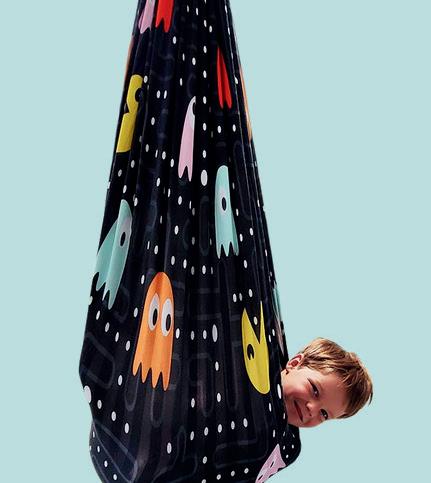



















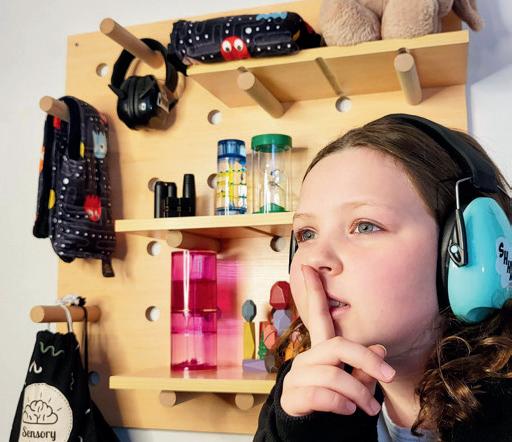





















By Naomii Seah , Industry Reporter
“Growing up with many of our nannies and our papas and aunties, uncles on the coast, we’ve prett y much been raised in the village of storytellers... that’s what inspired me right from a young age to follow in those footsteps.”
Puri Hauiti (Ngāti Porou, Te Whanau a Apanui, Te Aitanga a Hauiti) has been teaching for over 13 years at Gisborne Intermediate. Hauiti is a husband, father, and author. He’s also the founder of Ngā Ahikāpuni, a pūrākau Māori program at Gisborne Intermediate. During sessions, children learn storytelling techniques and pūrākau about their local rohe. Some of these


Hauiti describes pūrākau Māori as one of his biggest passions,

The context at Gisborne Intermediate
Gisborne Intermediate was established in 1940 to serve the town and surrounding rural population. Today, it has a roll of 533 students. Principal Andy Hayward describes the school as “the heart of our city... Our students are awesome and our staff are hardworking and committed to providing quality learning opportunities.”
The school’s roll largely reflects Gisborne’s wider demographic, with 60 percent of its students identifying as Māori, others as Pākehā and a “small group” of other ethnicities, mainly from Asia and the Pacific Islands.
Currently, the school’s strategic priorities include:


budding storytellers then go on to lead their own pūrākau sessions at the local primary schools.


since the beginning of 2025, Hauiti says it has already made an incredible diff erence for the tamariki involved, connecting them to their local environment, their communities, and improving their confidence.
• Improving student learning by raising achievement in literacy and mathematics; Building powerful
which led him to design and implement Ngā Ahikāpuni. Although the program has only been running environment,

• partnerships by increasing collaborations with parents, iwi, other schools and community organisations;



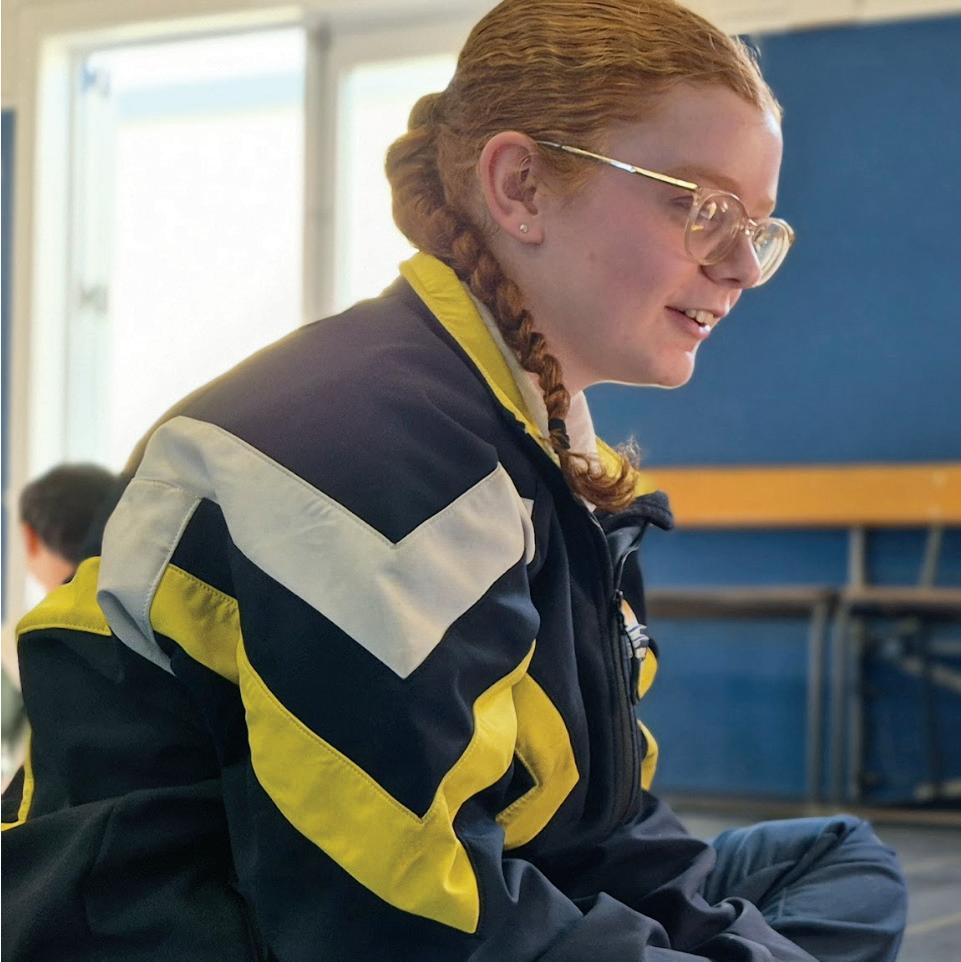


• Health and wellbeing monitoring and support;
• Creating contributing citizens through embedding school values (respect, integrity, self-management and excellence) and providing opportunities for students to be community conscious.
Ahikā: Reigniting the flames
Ngā Ahikāpuni addresses each of the above strategic priorities for Gisborne Intermediate. But the program is so much more than just meeting targets for Hauiti, the students, and the wider school community.
Hauiti describes the program as an initiative that works to “preserve and revitalise Māori storytelling traditions,”
and it is underpinned by the principles of Te Tiriti o Waitangi.
Hauiti is also the great great grandson of Treaty Signatory Tama i wakanehu i te rangi.
The name reflects the program’s kaupapa. The term ‘ahikā’ is usually defined as “burning fires of occupation,” and describes a concept in te ao Māori of iwi land rights earned through tino rangatiratanga, occupation of an area. Hauiti explains that whānau “keep the home fires burning with kōrero, stories, genealogy, whakapapa, history so those important things will never be lost within our world.”
Teaching tamariki these local pūrākau is a way of maintaining ahikā, then, as Hauiti is preserving the legacy of his ancestors, and ensuring their narratives continue through the generations. With Ngā Ahikāpuni, Hauiti wants



to ignite the flame within tamariki, creating future custodians of local stories.
As Hauiti puts it: “the ancient fires of our tūpuna—our ahikā—still burn today through the power of storytelling.
“I work on these stories to be able to share what we’ve learnt growing up and to be able to give those to our young people. Reconnecting a lot of our kids here on the East Coast back to who they are, what they are, but more importantly why they are.”
Through pūrākau, the program aims to foster connections to te ao Māori and empower tamariki to embrace their cultural heritage.
Hauiti says he sees a strong need for reconnection not just for the Māori children in Te Tairāwhiti, but right around the country.
“You ask a lot of our tamariki where they’re from and they just say, I don’t know, I’m from 22 Gladstone Rd... But what is your tribe? What is your iwi, what is your hapū, what is your maunga? Many of our kids, we just assume they know but they don’t have any understanding of these things.”
Empowering a cultural reconnection is important to Hauiti, and he says its rewarding to tell the children about their ancestors.
“The kids know all about The Avengers, Superman, Spiderman, all those guys, and I tell them about the true ancestors they come from... then they know they really come from a superhero.
“We descend from greatness, and one day greatness will descend from us.”


More than storytelling, pūrākau are identity-building, says Hauiti. This is true not just for the Māori students, but for the non-Māori ākonga too. The program creates an appreciation for indigenous cultures, says Hauiti, and students of other ethnicities are inspired to research their own ancestry and cultural stories.
Hauiti works with classrooms at Gisborne Intermediate and Gisborne Central Schools. He visits the classroom to take a lesson, which usually involves teaching and mentoring each child in storytelling techniques such as posture, delivery, tone, voice modulation, and even a positive mindset.
Lessons involve Hauiti teaching the children a certain pūrākau, which they then work on until they are able to recite it and tell it themselves. The program also includes teaching ākonga how to respond if things don’t go according to plan, building resilience and teaching coping strategies.
Ngā Ahikāpuni has its own assessment model, which begins as a spark, then progresses into warmer, hotter and bigger flames until the student meets the Ngā Ahikāpuni graduate profile. Ākonga are continually encouraged to reflect on their progress according to the rubric. There is collaborative and shared learning too— students are paired with one another to help develop their storytelling skills.


We descend from greatness, and one day greatness will descend from us
Additionally, Ngā Ahikāpuni has a professional development benefi t for classroom teachers, who sit in on the session. They also learn how to deliver pūrākau Māori, and fulfil some classroom release time.
Hauiti says when students feel confident, a group then leads and deliver pūrākau at local primary schools. Besides developing leadership skills and confidence for the intermediate ākonga, the initiative also builds stronger relationships between Gisborne Intermediate and other kura.
The tuakana-teina model also helps to nurture younger students as they move through the education system. Hauiti says these relationships are especially important for ākonga about to transition from primary to intermediate.
“Students feel a lot happier and at ease because they have made some connections and relationships [at Gisborne Intermediate].”
Gisborne Intermediate
Principal Andy Hayward says “The Tuakana-Teina model is
critical to the success of the program... you really can’t beat the connection you see when students are working together.
“The student leaders gain a far deeper understanding of the nuance and power of storytelling, and it is wonderful to see their confidence grow throughout the program. Being a skilled orator is not just about telling the story, it is about how you hold the audience which complements the way the learning is shared.
“Our student leaders working regularly in our contributing schools is a huge positive. It has helped foster positive relationships with those schools and given the students in those kura a positive first experience with Gisborne Intermediate students.”
Hauiti says one of the biggest impacts of Ngā Ahikāpuni has been empowering learners.
“For me personally, it’s about giving the kids a voice. Sometimes we don’t hear our kids. We think because
we’re adults, we’ve got all the answers. So the opportunity to actually speak their mind, to tell a story and to be the story has been huge in terms of confidence building.
“You can pull out the learning intentions, the morals or values or that stuff, but the biggest thing is how it makes them feel. Every week, the kids want to go back.”
One of the main schools Gisborne Intermediate is collaborating with through Ngā Ahikāpuni is Gisborne Central School. Deputy Principal Dylan Babbington says the program has brought huge value to their community, helping their students become leaders and fostering strong bonds between the two schools.
“It has been inspiring to see students from all ethnic backgrounds embrace this journey, with many stepping into leadership roles within the group. A key element of the program, championed by lead teacher Puri (Hauiti), is the emphasis on hono and whakawhanaungatanga whereby students are encouraged to form connections before sharing the pūrākau.”
Babbington describes the program as “mana-enhancing”, saying their students’ confidence has grown immensely, with pūrākau being shared between classes throughout the days and even school-wide at assemblies.
Stu Barclay, Principal at Gisborne Central School adds that the program has “done a great job of rekindling a love of storytelling, strengthening identity, and deepening connections to place.
“This kaupapa is also growing leadership and enhancing mana, giving our tamariki authentic ways to see themselves in stories.
“Our kura has grown immensely from being part of this

program. The impact has been powerful—building greater connection, fostering wellbeing, belonging, and cultural pride through the art of storytelling.”
The power of pūrākau to connect students to te ao Māori and their rohe has rippled out through the wider community too, says Hauiti.
“What’s been cool is that those kids have been going home and telling their parents... and parents have been messaging me saying ‘man, we’ve walked
up that hill for generations and we didn’t know that story.’”
Despite being in its infancy, Ngā Ahikāpuni has already garnered some interest from other principals around the country.
On a recent visit to Gisborne Intermediate, principals from Taranaki were regaled with a pūrākau, told by some of Hauiti’s students. Impressed by the students, some expressed interest in implementing the program for their own kids.



Now, Hauiti is looking at how Ngā Ahikāpuni can be developed into a professional development package, so the power of pūrākau can be shared with students across the country.
“I believe this could be really powerful across the motu to be honest with you,” says Hauiti, who cites the positive impacts of the program not only for Māori students, but for fostering hono (connection) across Aotearoa. He says
some of their most receptive students have been non Māori, who say they have developed new understanding and appreciation for te ao Māori.
“I can see how beneficial it can be not just for the future of Māori but for the future of everyone. You can see what’s happening around the country at this moment, clashes around Te Tiriti o Waitangi among them. My great-great grandfather signed the Treaty in good faith and its important I follow suit. I believe the biggest issue is understanding. Many nonMāori don’t know our why. In order for them to understand, we need to educate them.
“We’re proud people, we’re the people of this land, and we can only foster understanding of that through teaching and learning.”






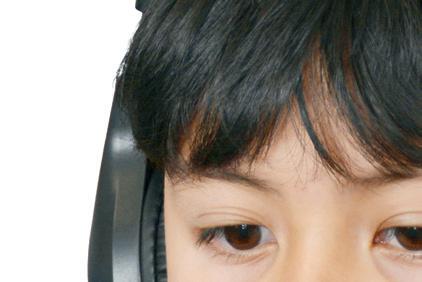



















Sunshine Books has always been a champion of local authors – beginning with two marvellous writers who became internationally renowned – Margaret Mahy and Joy Cowley. We are keeping this tradition going with our two latest series of decodable books – Reading Road and Reading Adventures.
The challenge with decodable texts that support a structured literacy programme is to make them relevant, engaging and rich in variety of ideas and language. Our aim for these texts was that they should be appealing enough to make reluctant readers want to pick them up, while being wri en to a language level that means such readers are not intimidated.

Our 50 Reading Road books are aimed at upper primary students and beyond. The authors, from New Zealand and Australia, have dug deep to create characters, themes and approaches that will appeal to reluctant or struggling readers. Their mix of styles and interests means that this series really does contain something for every reader – fiction, non-fiction, graphic novels, drama, humour, art, animals, sports, cars, history, the list goes on. While the lowest level books only contain complex code, they still look like age-appropriate books.
Another challenge for older students who lack confi dence in reading is to find a no stress environment in which they can practise their phonics skills without feeling that they are ‘failing’. To help solve this problem, Sunshine Books has developed the Reading Road AI Tutor. This revolutionary new product complements the reading of the physical Reading Road books. Once a student has completed work on a book, they log on to the AI Tutor and practise reading a passage from it. The AI Tutor gives instant feedback on their reading – including
on accuracy, fluency, rhythm and speed. It also gives practice in reading 10 pre-determined focus words if the student got them wrong in the initial read. The AI Tutor lets students work at their own pace and they can spend as much time as they like reading and re-reading until they feel they have mastered the phonics in that book.
For our new (upcoming) decodable series, Reading Adventures, internationally acclaimed author, Sally Su on, has created two very di erent main characters – Big Mess Jess and Jet Pack Jack.
The eight books are 72 pages long, which includes eight pages of student activities and teacher notes. The first books in the series contain only simple code – meaning that they can be o ered both to older, struggling students who need practice and consolidation of basic skills as well as confi dent younger students who have mastered the alphabetic code and will benefi t from being extended by these longer chapter books.

The Reading Adventures titles are illustrated in a graphic novel style, with short captions and speech bubbles. With a limited amount of text on the pages, they are not intimidating and students should find them very approachable.
Sunshine Books is proud to continue the legacy of supporting and championing New Zealand and Australian authors.

By Naomii Seah , Industry Reporter
Literacy has been declining in New Zealand since at least 2009.
Two reports in 2022 from Dr Nina Hood highlighted slipping reading achievement in primary and secondary schools, with persistent inequities across socioeconomic groups, ethnicities and genders. In an article launching her reports on The Education Hub, Dr Hood said she was “deeply concerned” about the findings.
“Literacy is essential for achievement across the curriculum,” she wrote.
“Ensuring that all young people are able to read and write will ultimately have flow on eff ects for achievement across all school subjects...
“Being literate is also connected with greater employment opportunities and higher pay, better health and wellbeing, and significantly lower incarceration rates. This means that literacy is not just an educational
issue. It is a social issue and it is an economic issue. It aff ects every single one of us.”
In response to growing concerns, the current National Government campaigned on the introduction of compulsory structured literacy in schools. The term was coined by the International Dyslexia Association (IDA) to describe programs of evidence-based literacy teaching strategies that have been shown to be eff ective for students with dyslexia, and can be applied to all learners.
The approach includes systematic and explicit teaching, usually beginning with phonics—learning the individual sounds that create words and then connecting those to written letters. The ability to “decode” words on the page to their constituent language sounds is then the foundation for further literacy learning, which is usually ordered in a structured way.
Dr Amy Scott , Better Start Literacy Approach national implementation lead at the University of Canterbury, said: “High-quality literacy instruction is grounded in evidence-based, structured approaches that explicitly and systematically teach skills such as phonological awareness, word decoding, vocabulary knowledge, reading fluency, and reading comprehension.”
Tamara Dahm, kaitakawaenga | facilitator (literacy) at Tātai Angitu said that “strong literacy skills are the foundation for success in learning and life. A structured literacy approach emphasises explicit and systematic teaching so that ākonga, including those with additional learning needs, can develop as readers and writers.
“An intentional focus on oral language comprehension, vocabulary, phonics, and sentence structure provides the stepping stones for this development.”
Dame Wendy Pye from Sunshine Books added that
besides the above principles of structured literacy, “there is a recommended scope and sequence that children follow, so they learn sounds and the letters that represent them in a structured, cumulative sequential way. “This is an international broad-based standard that has been incorporated across the world, first in the United Kingdom, then in Australia and now in New Zealand, as well as America and Singapore.”
The Lexia Reading team at ITECNZ work with resources based on structured literacy. They note that “the International Dyslexia Association, which coined the term structured literacy, explains that it involves ‘teaching the analysis and production of language at all levels: sounds, spellings for sounds and syllables, patterns and conventions of the writing system, word parts with meaning, sentences, paragraphs, and discourse within longer texts.’”
The refreshed English learning area for Years 0 to 6 lays out the expected progression for students in oral language, reading and writing skills using structured literacy sequencing. On the Tāhūrangi - New Zealand Curriculum (NZC) site, educators can look to the refreshed curriculum for specific teaching actions, including content and approaches for each stage of a student’s journey through their primary school years.
In addition to the sequence and progression outlined in the NZC refreshed English learning area, MoE approved literacy teaching resources can be found on Te Poutāhū - Curriculum Centre, including decodable books, read-together books for group learning and phonics cards for beginning readers. The cards also have teaching guidance on the back, which outline the appropriate learning stages for their use and teaching strategies. The resources are arranged in phases to help teachers sequence lessons.

For older students, approved resources and associated guidance on applying structured literacy approaches are also available on Te Poutāhū.

Teachers are also provided guidance on selecting the best resources for students based on their existing skills and capabilities.
Te Poutāhū notes “fluent readers should predominantly be working with year-level texts. However, when new skills and concepts are being introduced you might use simple texts to reduce cognitive load and use more complex texts to provide enrichment.”
It is recommended that teachers continue to assess ākonga to effectively evaluate and respond to their progress and support their skill development at an appropriate pace.
Given the ongoing challenges and disruptions of the past few years, many children lack some foundational literacy skills, which means they may struggle to access the curriculum and stay engaged with school as they progress.
Dame Wendy echoed Te Poutāhū, saying “we need to identify how to help these children, and one way is through assessment. New technology, like closed-circuit assessment programs, can help assess a child quickly, and identify gaps in foundational skills which teachers can then address.”
Carla McNeil from Learning Matters said it’s crucial to address foundational skills.
“As educators and parents, we often talk about fostering a love of reading and writing, but genuine enjoyment comes as a byproduct of being able to do these things well. It’s hard to love something you can’t access.
“To truly develop and nurture that love, we must first identify who can already read with confidence and who cannot.
Structured literacy approaches, paired with quality diagnostic assessment tools aligned with Te Mātaiaho skill progressions, help us pinpoint where learners are on their journey.”
Once skills gaps are identified, educators can use the guidance at the appropriate level outlined in the NZC to help accelerate a student’s progress. Te Poutāhū also has guidance on accelerating learners, organised by year-level. The main strategy relies on targeted support through small groups to deliver additional teaching and learning following the sequence outlined in the English learning area. Classroom teachers are expected to provide this targeted teaching, which may involve upskilling in some cases, with support from school leadership and specialist staff.

For those who are upskilling to provide targeted support, Ms McNeil advised that “for those still learning, the priority is building foundational skills so reading feels possible. For fluent readers, it’s about expanding vocabulary, building
background knowledge, and off ering choice and challenge to maintain engagement.”
Dr Scott noted that “Skilled teachers carefully scaff old students’ reading and writing attempts to ensure they are successful. They adapt
They focus on what students can achieve and their next steps for literacy. Importantly, culturally responsive teaching practices that celebrate and affirm learners’ language, identity, and culture support students’ engagement in literacy learning.”
To lift student outcomes, collaboration and consistency should be sought between classroom and targeted teaching. Ms Dahm emphasised the importance of a teachers’ role in accelerating students.
“Kaiako play a crucial role in bridging foundational gaps through explicit, systematic teaching, ongoing assessment, and targeted support, while maintaining engagement through age-appropriate and meaningful texts.”
Without intrinsic motivation, many children are likely to disengage with eff orts to accelerate their literacy learning. This makes the meaning of texts paramount, said Dame Wendy. Image courtesy of Learning Matters
E ective literacy implementation in schools comprises many interconnected pieces, each playing a crucial role in creating a comprehensive picture of success for both kaiako and ākonga.
Schools are juggling a lot, and it can be challenging to know where to focus or how to maintain momentum. It’s not about having everything perfect from the start; it takes time to bring each piece into place, and every school’s literacy puzzle may come together a li le di erently.
When the pieces are in place, what could this look like? Strong leadership and thoughtful planning give direction and purpose.
Partnerships with kaiako, Boards, whānau, and the wider community create shared ownership. Teachers have space and guidance to grow their knowledge and strengthen
their practice, supported by highquality instructional materials.
Reliable assessment clarifies strengths and needs, ensuring appropriate support is provided and progress is monitored and celebrated.
Instruction, targeted intervention, and coaching systems work together across all tiers to support e ective learning.
Induction processes ease transitions when sta change, and a culture of refl ection and continuous improvement helps maintain momentum.
As the pieces come together, the puzzle takes shape, and literacy becomes embedded in a way that lasts and grows.
If you’d like support in connecting the pieces for literacy success, our team can help.
For more information please visit learningma ers.co.nz
instruction to ensure all students can access teaching at a level appropriate to their skills. Working within a strengths-based framework skilled teachers will engage and motivate students to take risks in their learning.



















































































































































































































“In New Zealand we have very diverse learners, so children are at diff erent levels when they first come to school. Structured literacy works very well with the children who need help, because it gives them not only sound/letter knowledge, but the skills to understand meaning. We read to discover things, so understanding meaning is important.
“If we can make children into readers then we have changed a child’s life. They can do things in their life, they can apply for a job, they can become self-sufficient. As educators, that’s our responsibility.”
This means engagement is key, so teachers should endeavour to include meaning at all stages of literacy acquisition.
Ms Dahm said: “Comprehension is the ultimate goal of reading; we read to gain meaning and participate fully in society.”
“Keeping this in mind helps kaiako incorporate all the elements of a structured approach to literacy into their practice, so nothing is left to chance. Importantly, we must ensure all elements are incorporated from the start of literacy instruction— comprehension is not something that is taught once decoding is underway!
“While building skills is essential, so is nurturing engagement and identity as readers and writers. Confidence grows when ākonga see themselves reflected in diverse, high-quality texts and they have genuine choice about what they read and write. Creating authentic spaces where reading and writing are purposeful and celebrated is equally important.”
This makes culturally responsive teaching a crucial element of a successful structured literacy approach, as previously noted by Dr Scott . Ms McNeil said: “We need to understand the whole learner.
“This includes psychological factors like self-perception and motivation; cognitive factors like literacy skills and working memory; and ecological factors like a learner’s home environment and cultural context.

“For those still learning, the priority is building foundational skills so reading feels possible. For fluent readers, it’s about expanding vocabulary, building background knowledge, and off ering choice and challenge to maintain engagement.
“Across all stages, reading to our children is invaluable,” said Ms McNeil.
“It models fluency, shares the joy of a story, and shows how we can glean both knowledge and delight from what we read together. In line with Te Mātaiaho, educators can foster a love of reading by selecting texts that align to skill progressions while connecting to learners’ interests and identities; providing authentic opportunities for learners to choose what they read and write; embedding explicit vocabulary and comprehension teaching into all reading experiences; using shared, modelled, and guided reading to
demonstrate fluent, expressive reading and deep thinking; and ensuring tasks are purposeful, inclusive, and connected to broader curriculum learning.
“The bottom line is that access and skill are gateways; the reward is the enjoyment.”
Next year will mark the second year of government-mandated structured literacy approaches in schools. Schools are at a wide range of stages on their structured literacy journeys and implementing the refreshed English learning area for Years 0 to 6. Professional development is ongoing as educators and leaders identify areas of improvement in personal and school-wide practice and respond to the children’s needs.
Some schools may need ongoing support with understanding and eff ectively implementing structured

literacy approaches in their context, others may focus on specific teaching techniques, and others may be looking for resources. How should schools select the right program to progress along their structured literacy journey?
When looking for courses, the Lexia Reading team noted educators should understand specific terms.
“The ‘science of reading’ refers to the evidence on how people learn to read and write, while ‘structured literacy’ is the practical application of this evidence.
“The Ministry of Education states that ‘schools can allocate structured literacy resource funding to any structured literacy resource they choose’— and there are many options available. However, simply claiming to follow a structured literacy approach isn’t enough; there should be evidence demonstrating its eff ectiveness.
“Ultimately, reading comprehension depends on both decoding (translating written words into sounds) and language comprehension (understanding the meaning of words and sentences), as outlined in Gough and Tunmer’s Simple View of Reading
“When choosing a structured literacy resource ensure it covers key concepts in its scope and sequence, and select one that is proven to work through peer reviewed evidence, rather than merely evidence-based.”
Dr Scott added: “Quality professional learning and development is a critical component of eff ective structured literacy teaching and assessment practices. The research supports quality PLD being accompanied with structured lesson plans and teaching resources. Importantly, teachers need to be empowered through their PLD to provide instruction that is not only eff ective but also responsive and inclusive, ensuring all students have the skills and confidence to thrive as readers and writers.”








As schools continue to implement a structured approach to teaching literacy, many teachers are asking how they can incorporate more explicit elements into their writing instruction.
Reading and writing are reciprocal processes: what we decode and make meaning of in print, we must also learn to encode in our own writing. Writing is not simply the transcription of sounds into le ers; it is the act of making meaning, shaping ideas, and communicating. When students write, they demonstrate not only their understanding of language but also their ability to use language to express themselves.
Reading and writing both build on spoken language. Yet children do not all acquire language in the same way or at the same pace. Oral language develops in diverse ways, shaped by experiences, culture, and communities. The role of the teacher is essential in building on these strengths to support literacy development. Structured, intentional instruction ensures all learners have the opportunity to develop the knowledge and skills needed to communicate successfully. This is the focus of our Growing Writers PLD.
At its core, writing requires a set of foundational skills including phonological awareness, phonics knowledge, vocabulary, sentence construction, and spelling. But these alone are not enough. Students also need to understand how texts are shaped for di erent purposes and audiences, and how writers make deliberate choices to achieve clarity and impact.
The Simple View of Writing is used as a framework for Tātai Angitu Massey University PLD. It outlines three essential components that are necessary for writing:
• text generation (ideas, words, sentences, paragraphs),
• transcription (spelling, handwriting, typing),

(Berninger et al., 2002)


• executive function (planning, organising, reviewing).
• All of these are constrained by the limits of working memory (Berninger et al., 2002).
A structured approach to writing helps ensure that none of these components are le to chance.
Beginning with the sentence, o en thought of as the building block of writing, teachers can explicitly show how ideas are cra ed, joined, and extended. From there, students can progress to paragraphs, then to whole texts. Alongside this, is the development of transcription skills and executive functions, helping students balance the cognitive load of writing while still focusing on meaning and purpose.
For some learners, writing can feel overwhelming, especially if transcription skills are still developing. Providing sca olds such as sentence stems, writing frames, and word banks, can help students
focus on generating ideas, without being held back by transcription di culties. Having frequent opportunities for oral rehearsal is important, so students can practise their ideas. Teacher modelling is also fundamental for supporting students, as it shows students what writers do and how they think.
Our PLD uses freely available Aotearoa New Zealand resources such as Junior Journals and School Journals as a way for teachers to model strong writing while also building student knowledge and language. These texts provide authentic contexts, rich vocabulary, and diverse voices, supporting the integration of reading and writing.
Equally important is the creation of a classroom culture where all writing is valued and celebrated. When writing connects authentically to students’ lives, communities, and interests, motivation and engagement increases. The key is to balance explicit skill
instruction with opportunities for creativity, voice, and choice.
Assessment plays a central role in this process. By analysing student writing samples, teachers can identify strengths and pinpoint areas for intentional teaching. Spelling di culties, for example, can be addressed through targeted instruction, while students who are ready for greater challenge can be supported to use more complex sentence structures or explore new text types.
Tātai Angitu Massey University o ers writing PLD to support teachers to build the knowledge and skills students need as writers. We provide practical strategies, classroom examples, and evidence-based guidance that make it easier to teach the essential components of writing. Teachers leave with a deeper understanding of the components, as well as the tools to plan, sca old, and assess writing in ways that engage and extend all learners.


This short course is focused on teaching the knowledge and skills students need to succeed as writers across the Year 0-8 pathway. This course is based on research, the English learning area, and practice from real classrooms.
EMBEDDING
Delivered as a one day workshop or four 1.5 hour webinars to suit your school’s needs. Let us help you grow confident, capable writers.


Yet, for many learners, especially those with additional needs such as dyslexia or speech and language difficulties, achieving this milestone requires carefully designed and well-delivered support. Within a Multi-Tiered System of Support (MTSS), targeted (Tier 2) and tailored (Tier 3) teaching play a pivotal role in ensuring all learners thrive.
Universal, whole-class literacy instruction (Tier 1) lays a strong foundation, but for some learners, additional layers of support are needed to accelerate progress and prevent longterm struggles. Targeted and tailored interventions ensure learners not only receive the right type of support but also the right level of intensity. Decades of research confirms that these interventions must address both word recognition skills as well as language comprehension skills to ensure all aspects of effective reading comprehension are supported.
Children’s literacy development is not only a predictor of academic achievement but also of lifelong wellbeing. To achieve equitable outcomes, schools must ensure structured, evidence-based literacy practices across all tiers, in order to accelerate progress for those at risk while extending the potential of learners with exceptional abilities.
The Better Start Literacy Approach (BSLA) integrates the best evidence on effective literacy instruction for struggling learners: explicit and systematic teaching of phonics, phonological awareness, spelling, writing, and oral language. Effective teaching strategies such as modelling, scaffolding, guided practice, immediate corrective feedback, and well-structured lesson plans are embedded throughout.
Recognising the critical need for skilled specialists, BSLA has developed a new professional learning course that equips teachers with the knowledge, tools, and resources to deliver high-quality Tier 2 and Tier 3 literacy support. Teachers completing this course will be
ready to confidently implement BSLA’s targeted and tailored approaches, supporting children with dyslexia, speech, language, and literacy learning needs within their own school settings.
Recent research led by Professor Gail Gillon and colleagues (Gillon et al., 2023) highlighted the impact of targeted instruction. In one trial, 98 five-year-old children received four 30-minute BSLA Tier 2 lessons per week for 10 weeks, in addition to Tier 1 classroom teaching. Results showed accelerated growth in non-word reading and spelling compared with peers who did not receive Tier 2 support.
A more recent large-scale study exploring the effectiveness of BSLA Tier 2 (McNeill & Gillon, 2025) demonstrated that these benefits are sustainable at a national level. The research compared 1,265 learners receiving Tier 2 support with two control groups. After 30 weeks of teaching, children who received BSLA Tier 2 showed significantly stronger outcomes in reading and spelling compared to peers who did not receive this support. The data also showed an effective closing of the gap with peers who had entered school with stronger
literacy skills. This study is notable for showing that BSLA’s structured Tier 2 support can deliver consistent, meaningful impact when rolled out at scale across diverse classrooms nationwide.
The research is clear that effective targeted and tailored literacy instruction is essential for ensuring all learners reach their potential. With the BSLA’s evidence-based framework and new specialist course, schools can empower teachers to help all children reach their literacy learning potential.
Read our research:
https://betterstartapproach. com/about/our-research
Learn more about our course: https://betterstartapproach. com/professional-learning/ targeted-and-tailored-PLD.








Targeted (Tier 2) and Tailored (Tier 3) professional development for teachers and literacy specialists with Better Start Literacy Approach

Based on the Better Start Literacy Approach (BSLA) and latest evidence on effective interventions for struggling readers
Designed for Aotearoa New Zealand classrooms and students
Gain deep knowledge through 12 months of workshops, coaching and Communities of Practice


Includes lesson plans, assessments, videos and online tools
Proven to boost reading, spelling and oral language outcomes for struggling students


www.betterstartapproach.com

Gain postgraduate credentials with University of Canterbury






• Graduate Diploma in Teaching (Secondary Technology Education)
• Metal Technology and Woodwork Teacher




Open Polytechnic’s Graduate Diploma in Teaching (Secondary Technology Education) has helped Thomas Schaare change career from the trades to teaching.
The 29-year-old is a qualified Light Fabrication Engineer but decided to fulfil his high school dream of becoming a teacher.
Before studying with Open Polytechnic, Thomas worked at New Plymouth Boys’ High School (NPBHS) in technology and as a hockey coach, but had a Limited Authority to Teach, with the idea for him to become a fully qualified teacher one day.
Thomas’s practical trade background, coupled with the theory and learning from the Graduate Diploma in Teaching (Secondary Technology Education) have helped him gain the role of Metal Technology and Woodwork Teacher – Dean of Barak House since graduating.
The benefit of online flexible learning
Thomas began his parttime study through Open Polytechnic in 2023, with flexible online learning allowing him to study while continuing to work at the school.
Living a busy life meant early mornings and late nights were the only times Thomas

had to work his way through the course materials and assessments. “I decided to study with Open Polytechnic due to the style of course they off ered,” Thomas says.
“Learning online suited my schedule and life, as teaching and coaching hockey took a lot of my time during the day.”
“Having the ability to study around my work commitments made a significant diff erence in the quality of the programme for myself.”
The Graduate Diploma in Teaching (Secondary Technology Education) opened Thomas’s eyes to the theoretical side of teaching and learning.
“It provided me with the knowledge required to successfully engage students within the classroom and achieve
the best possible engagement with students,” he says.
The theory of learning and understanding how students’ brains develop and learn has been the most practical for Thomas.
He found neurodiversity and having the ability to adapt his teaching to all students’ learning needs was enjoyable to study.
“The neuroscience aspect of the course was very informative and helped me to develop my teaching philosophy,” Thomas says.
“Knowing the scientific evidence and studying student development has made a positive impact on my teaching.”
“Learning about Tiriti o Waitangi – the Treaty of Waitangi was also a highlight for Thomas.”
“Having a deep understanding of the impact and implications of our country’s history has opened my eyes to the reality that a lot of our students in Aotearoa face,” Thomas says.

The Graduate Diploma in Teaching (Secondary Technology Education) has allowed Thomas to become a qualified teacher and get onto the trained teachers’ pay scale.
He has since been appointed as a Dean of House at NPBHS and is part of the pastoral team within the school.
Thomas is now completing his two years of teacher registration.
Thomas thinks that while studying when working can be tough, it can be overcome by making sure that learners have good routines and set times to complete their study.
“Be prepared to knuckle down and do the work,” Thomas says.
“It was a learning experience for the first six months but once I developed solid routines it became easier to manage.”
Thomas would highly recommend Open Polytechnic to anyone who wants to study while working.
For learners interested in finding out more about the Initial Teacher Education qualifications at Open Polytechnic, either visit our website, or call us on 0508 650 200.




Graduate Diploma in Teaching (Primary Education) (Level 7)
Unlock your teaching potential with our one-year Graduate Diploma in Teaching (Primary Education).
Use your existing degree to gain practical skills and experience, becoming a qualified primary teacher ready to inspire young learners.
Begin a fulfilling career in education with our threeyear Bachelor of Teaching (Primary Education). Gain comprehensive knowledge and practical experience to become a qualified primary teacher, ready to inspire and shape young minds. Embrace Māori language and culture to enrich your teaching and support all learners.
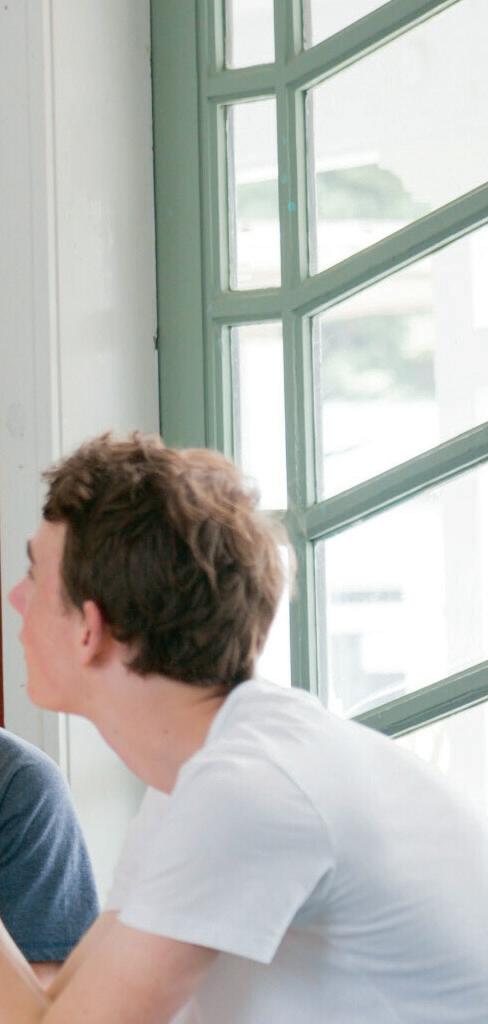
Graduate Diploma in Teaching (Secondary Education) (Level 7)
Transform your passion into a career with our one-year Graduate Diploma in Teaching (Secondary Education).
Use your degree to gain practical skills and experience, becoming a qualified secondary teacher ready to inspire and educate teenagers.
Graduate Diploma in Teaching (Secondary Technology Education) (Level 7)
Turn your trade expertise into a teaching career with our one-year Graduate Diploma in Teaching (Secondary Technology). Use your practical skills to become a qualified technology teacher and inspire students in Technology subjects.
By Naomii Seah, Industry Reporter
Globally, participating in ongoing professional learning and development (PLD) is an expected and essential part of the teaching profession.
Teachers’ PLD is usually defined as an activity aimed at improving an educators’ teaching ability through a structured and facilitated approach. This might include attending seminars, participating in sessions run by external providers, or undertaking extra study in a specific field or subject.
Responding to our changing world, changing communities, and changing understanding of education and pedagogy requires PLD. Across their careers, teachers must continually learn and adjust their practice to ensure it maintains its quality. This is reflected in the fact that across the OECD, most teachers are bound by law to undertake PLD as part of their work, or for specific purposes like promotions and salary increases.
New Zealand is one of only four countries in the OECD where PLD is not compulsory. However, this doesn’t mean that PLD is not expected or required of teachers.
In New Zealand, PLD is becoming more centralised as the government focuses on making our education system nationally consistent. As noted in a recent report from the Education Review Office (ERO), teaching quality is a critical factor for student success. This makes PLD a powerful tool to lift achievement in schools, and the overall quality of our education system. With the rollout of structured literacy and structured maths approaches, most schools will be undertaking PLD provided to support teachers with changes to the national curriculum. However, besides the PLD required to effectively implement the new curriculum, many educators and school leaders are looking for opportunities

that support goals specific to their students, the needs of their school community, and specific career ambitions.
Parts of New Zealand are undergoing rapid demographic shifts, which means schools and teachers are seeking PLD to respond to corresponding changes in student needs like cultural and language considerations. Students are also presenting with additional needs following the social and economic challenges of the pandemic. There is also a growing awareness of how wellbeing affects student learning, and how schools can better accommodate neurodiverse learners.
Similarly, the world is also changing at pace. New technologies bring new possibilities, and new problems, which manifest in the classroom. Students are grappling with the consequences of increased visibility and accessibility to one another through social media, and the advent of widely accessible generative artificial intelligence is forcing educators to adapt their approach. Our continually changing and evolving world demands a continually changing and evolving educator to best prepare our young people for an unpredictable future.
These challenges mean that there is demand for PLD which addresses cultural competencies, language skills like te reo Māori and NZSL, pastoral care and mental wellbeing, teaching

strategies for neurodiverse learners, and integrating technology in the classroom.
Teachers may wish to consider which areas of their practice they would like support with, and which skills may be relevant both to their immediate practice and future career goals. School leaders might consider whole school approaches—which areas of school life require strengthening to eventuate the school’s long-term vision and values? What are community expectations of the school?
For educators looking to upskill, options range from microcredential courses to full courses of tertiary study like postgraduate diplomas or degrees.
Many teachers and schools will be looking for shorter term PLD which can be integrated into teaching practice and built on iteratively. Fortunately, there are many formats of PLD available to address diverse needs, from formal short courses to seminars, online training, conferences and workshops, and peer-facilitated training, mentoring or supervision.
Leaders should communicate with their staff and school communities to understand their needs, and how PLD is
received to ensure that the chosen course is effective and adequately supported to be integrated into practice.
It’s also important to consider how the PLD will fit into teachers’ existing workload. Does a longer session once a term, or an extra hour each week work best for your school’s needs and culture?
There are many flexible PLD options available too, such as online or on-demand courses.
Some providers deliver PLD onsite at your school. Your whole school may be involved, or many PLD opportunities are suited to smaller groups, like teachers of a particular year level or subject area.
Sessions facilitated by outside providers can often incorporate learning opportunities for students and families.
Cyber safety or wellbeing workshops, for example, could be delivered separately to school staff, students, and parents and caregivers.
Qualified teachers with a special interest in specific fields may consider undertaking a thesis or other dissertation at

the tertiary level, which could qualify them to be leaders in their fields, or in their schools.
Current teacher aides or those with limited authority to teach (LAT) might look at studying to become a fully qualified teacher. Initial training is the foundation of a teacher’s practice, and there are many options available. With the support of a school, some tertiary courses are even offered remotely, and part-time, so teacher aides or LAT holders can continue working. TeachNZ offers some scholarships for tertiary pathways, and trainee teachers may also be eligible for interest free loans through Studylink.
Rather than simply responding to changing needs, schools
Marie Hirst and Dr. Jo Knox are highly regarded maths facilitators who bring a wealth of knowledge and practical experience to their engaging workshops. They o er bespoke school PLD and workshops.
Maths leadership workshops
Termly workshops to grow leadership capability, share best practice, discuss hot topics, keep updated with what’s new and develop curriculum and pedagogical content knowledge.
Making maths count (10 practical workshops)
• Unpack the teaching sequence in the mathematics curriculum
• Explore explicit teaching activities using materials e ectively
• Observe clips of teaching in action

Weave e ective maths pedagogy with engaging practical activities to hook students into maths at the beginning of the year and create a maths buzz. Includes a detailed plan and resources for your first 3 weeks of maths. Maths snapshots
Quick, diagnostic assessment tools aligned with the new maths curriculum.
For more information: h p://bit.ly/MMEmaths
and educators are also increasingly aware of the need for a future focused approach, where leadership anticipates and drives change to ensure teaching and learning continues to work well for all students.
Leaders might look for targeted PLD to support the development of a vision, and leadership capacity. Strong leadership is crucial for enacting meaningful organisational change which makes a difference for students and the school community, as this requires a long-term vision with an associated plan. Leaders can find customised coaching, and external support to implement customised PLD programs which support their goals.
It’s important for all members of your school team to feel valued, whatever their role. This means PLD for non-teaching staff is also essential. Make sure all school staff are encouraged to pursue PLD to strengthen all aspects of your school.
Strong educational outcomes depend on effective teaching, a robust and inclusive school culture, and happy and engaged students and families. All members of your school’s staff should continue their learning journey to ensure they are able to bring their professional best each day. A strong support team, that feels valued and respected equally to teachers, will enhance your school culture, and learning outcomes.

Schools today need leaders who can do more than manage—they need leaders who can inspire, adapt, and lead change with purpose. Refresh, Reconnect, Refocus is a professional learning programme designed for educators with leadership responsibilities who are ready to step into that challenge. Unlike traditional leadership programmes that focus on surviving the role, Refresh, Reconnect, Refocus equips leaders to thrive. It’s about rediscovering your ‘why,’ experimenting boldly, and gaining
the clarity and tools to shape the future of learning in your school.
Over the past two years, more than 60 school leaders from New Zealand and Australia have taken part—and the impact has been remarkable. As Sarah Martin, Principal of Stonefields School, reflects:
“The programme gave me the space to step back from the operational busyness and recentre on my core responsibilities, the values that underpin our leadership, and the clarity needed to lead with purpose.”
At the heart of the programme is a three-day retreat where leaders pause, reflect, and learn frameworks and strategies for leading transformational

change. From there, the journey continues over 20 weeks of mentoring and peer collaboration, ensuring that fresh ideas translate into real impact. The programme culminates in a celebration day, where leaders share their progress and inspire one another.
Participants consistently leave with:
• Renewed clarity and confidence.
• Practical tools and frameworks for leading change
• A trusted network of colleagues who continue to challenge and support them.
Whether you’re an Assistant or Deputy Principal, a curriculum or team leader, or a Principal, this programme is an opportunity to grow as a changemaker and reimagine what’s possible for your school. New programmes for 2026 are now open. Are you ready to Refresh, Reconnect, and Refocus?
Learn more at www.futuremakers.com

By Naomii Seah, Industry Reporter
Pinehurst Theatre is described as “the heart of creative life” at Pinehurst School.
Opened in 2023, it is an impressive, flexible, multi-purpose space for drama, music, and dance performances, and community events. The auditorium seats 344 people, and boasts a large, flexible-use stage
But Pinehurst Theatre is more than an excellent performance venue—it’s a classroom. Students are given the opportunity to learn about every aspect of production, from running a show backstage, to operating audiovisual equipment.
As a leading private school on Auckland’s North Shore, Pinehurst School had a clear vision for a state-of-the-art, professional and flexible venue that would meet the high expectations and myriad needs of their school community. Having previously received a design with a recommended budget of $1.6 million, which was deemed excessive, Pinehurst School approached Halogen Avenue for a solution to their needs.
Rick Senekal from Halogen Avenue said he collaborated closely with Kelvin Colling and Euan MacKenzie of NAS Solutions “from the outset” to create “a design that met both performance expectations and budget constraints.
“[NAS Solutions’] input ensured the d&b system was deployed e ectively within

the school’s financial parameters.”
Kelvin Colling, general manager of NAS Solutions said they selected a d&b audiotechnik front of house system because “it was clear from the get-go that Pinehurst School did not want any corners cut, and they wanted to get the solution correct and reflect the high-quality standard of assets and experience that the school are proud to represent.
“d&b audiotechnik are arguably the world’s most acclaimed manufacturer of loudspeaker and audio solutions, demanded by internationally acclaimed shows such as Harry Po er and Aladdin, and used by global touring artists such as Madonna, Eminem, and Coldplay. It is also the installed brand of choice for iconic venues like the Sydney Opera House, Royal Albert Hall in London, and The Berlin State Opera.”
Another advantage is that d&b audiotechnik manufactures complete workflows, right through to components like design and control so ware and amplifiers. As components are made by one manufacturer, the final workflow is seamless. Each part of the system is compatible and integrates e ciently with the other

parts, minimising the risk of errors and improving operational experience.
Due to the multipurpose nature of the theatre, Pinehurst School required their new AV system to perform well across multiple applications.
For school assemblies and ceremonies, and external community events, the AV system must deliver clear and intelligible speech to every seat in the house. For drama, music and dance performances, audio should be of a performance quality. The equipment should have minimal visual impact, be able to change configurations with the stage, and distribute tone and volume evenly across the audience.
To solve these challenges, Halogen Avenue and NAS Solutions designed a dual-mode system. A user-friendly Kramer Control and touchscreen interface was installed to enable everyday use, requiring minimal technical knowledge. It provides basic functions, and users can easily connect microphones, laptop input and projection. For more elaborate productions, the school can enable full control from the AV booth.
To achieve balanced sound and even coverage, complementary speaker components were chosen, and strategically positioned to ensure high quality, intelligible speech. The system uses both fixed and portable components to balance ease-of-use and e ciency with adaptability. For instance, a fixed rig and lighting bars minimises the need for stage adjustments between uses. However, the loudspeaker system is mounted on beam trolleys, allowing forward and backward movement to account for the portable stage placement.
Mr Colling said accounting for the portable stage was a challenge in the early stages of the design process, as the addition and removal of the structure altered the position of the audience and therefore the area of required audio coverage.
“A er an almost sarcastic comment to Rick about the PA moving itself to suit the current setup, he took us seriously and designed a fully automated and engineered track system to move the sound system.
“This meant that we were able to save cost and ensure that the client had the best audio configuration for the given room orientation. When the stage is built in front of the permanent stage area, the sound system moves forward with the press of a bu on.”
With the inclusion of a dualmode function and the moveable components, Halogen Avenue and NAS Solutions were able to deliver an impressive AV system that met the school’s high expectations, without compromising on equipment quality, for under a third of the budget originally quoted to Pinehurst School.












Over the past decade, Pause Breathe Smile has been teaching mind health to educators, who then pass it onto their students. The difference it makes in Aotearoa’s classrooms is measurable: Pause Breathe Smile’s evidencebased practices increase calmness in the classroom, improve focus and attention in tamariki, reduce anxiety and relieve, teacher stress, too.
A study by Xiaolin Li published in Nature in March 2025 validates this as well, finding that mindfulness practices can also enhance academic achievement. The research looked at different modes of teaching methods, including those that only focus on academic performance and others that integrate holistic practices such as mindful breathing practices. The participants in the study, 115 children aged 11 to 16, were observed in their learning environments and the researchers then surveyed exam results, attendance, learning ability, classroom performance, progress, and level of learning

interest. The double-blind study found that a more humanistic approach in the classroom, one that integrated holistic practices like mindfulness, “not only significantly increases students’ classroom participation and interest in learning but also greatly enhances their self-confidence, sense of responsibility, teamwork, and creativity.”
A 2023 study by Maha Salem and Nancy Karlin found that mindfulness education could significantly improve college students’ attention, emotional adjustment ability and learning efficiency. With Pause Breathe Smile, educators observe that students’ interest in engaging with new concepts and activities is typically higher when they are practicing mindfulness regularly. We know that tamariki are overwhelmed: the
Southern Cross 2024 Healthy Futures report found that 60% of Kiwi parents are concerned about how their children are coping with the pressures of life. But this new research suggests that when we treat our tamariki and rangatahi as holistic beings, when we integrate small, simple breathing practices and exercises that cultivate their self-awareness, it creates an eco-system that has exponential impacts and helps them to cope better with school, and life in general.
How does it work? When children (and adults) are dysregulated — stressed, anxious, overwhelmed — they can’t focus and are not in the optimal state of mind to learn. Once our children are regulated, however, they can engage and manage a lot more information, and teachers see more positive outcomes from
their efforts. It only takes three to five minutes of breathing practices, moving meditation, perhaps a gratitude circle in the classroom each day, for better results for students.
“Seventy percent of children did their best scores on a basic facts test after we practiced mindfulness ahead of the test,” reported a teacher at a school in 2019, after Pause Breathe Smile was implemented in their classroom. And we hear similar feedback from schools around the motu every week, on everything from truancy and disengagement to classroom disruption and academic achievement.
In 2025, with the added pressures of new curricula and assessments, adding one more thing to the teaching day can seem impossible. Pause Breathe Smile is here to help you to support your learners’ wellbeing. Mindfulness has a positive impact on teachers and senior leaders in schools too; according to our November 2024 impact evaluation, practising Pause Breathe Smile with students improves job satisfaction in classroom staff and leads to more enjoyment at work.
*Pause Breathe Smile Charitable Trust makes mindfulness free for all primary and intermediate school children, thanks to the support of Southern Cross.



Primary and Intermediate schools can receive free Pause Breathe Smile training and unlimited access to resources to support teacher and tamariki wellbeing. Fully funded by Southern Cross, contact us at pausebreathesmile.nz





















































Pause Breathe Smile
Health Ambassador with Southern Cross


























































































By Naomii Seah, Industry Reporter
Schools need to protect their infrastructure and property from theft and vandalism while ensuring reasonable access for staff, relief teachers, contractors, cleaners and maintenance personnel.
In the past, this meant having countless traditional keys, which meant coordinating copies, replacing locks and complicated access management involving manually logged records. Traditional keys are also costly and time-consuming to replace, and any issues trigger an administrative wave that takes time away from the other complex factors that come with running a school. Fortunately, with new technologies come new ways to manage access and security. Many schools are embracing electronic access control systems, which streamline access management while improving security and convenience.
There are many different electronic access systems. What suits a school or organisation will depend on its needs, including size, existing infrastructure, budget and security levels. For instance, older schools with aging infrastructure should consider whether new electronic access systems can be retrofit onto existing doors.
Most electronic access systems share several key features, like centralised control software. This has the benefit of providing administrators with real time data on who has accessed which parts of campus, an invaluable feature in emergency situations.
If access cards or electronic keys are lost, the centralised system means components can be reprogrammed immediately, eliminating security issues.
What’s more, electronic access systems enable full customisation. For instance, contractors or external

providers can be given access to specific areas, on specific days, and at specific times.
Besides the access keys and cards themselves, the doors and locks can be programmed. This means that classrooms and other parts of the school can be made secure during weekends, after hours and during school holidays if needed.
Centralising access control is not only more secure, it is more convenient for users, as they only need to carry a single card or electronic key. Some systems, like electronic key options, require keys to be reset or reactivated, adding an extra layer of security and monitoring.
Electronic access systems can also support schools’
broader security plans. The convenience of centralised, online management systems means that access can be controlled remotely. The software can be used alongside video surveillance systems and other security measures like security patrols to help deter theft and vandalism. These measures can help schools to protect their valuable resources while delivering convenient and flexible access to relevant personnel.
Ronnie Pocock from ASSA ABLOY said modern access control is helping schools take charge of safety—with more precision and less effort.
“By moving from traditional master keys to programmable electronic ones, schools are gaining flexibility and control.

“Staff access can be tailored to roles, and lost keys are no longer a risk—they’re simply disabled.
“Wireless systems are also making a difference. At one Auckland school, a wireless solution now manages access across teaching, admin, and residential buildings. Staff use proximity cards with personalised access rights. The system supports zone-specific control, real-time monitoring, and full lockdown when needed—helping schools stay ready for anything.
“Wireless locks are proving just as valuable—especially when integrated into wider access control platforms. In school environments, these locks can connect with panel-based systems that coordinate access with other security elements like cameras and alarms. This enables real-time management of access rights, audit trails for door events, and zone-specific control across diverse building types. The system also supports lockdown procedures and can be retrofitted to existing hardware, making it a smart, scalable solution for evolving school needs.
“These technologies help schools decide who gets in, when, and where—creating safer spaces and smoother operations.”

Looking for a more secure and manageable way to control access, South Otago High School replaced its old key system with eCLIQ from ASSA ABLOY. Installed over 70 keys and the doors they open.
South Otago High School has been part of the Balclutha community since 1926. It’s the largest school in the region, with 530 students, six teaching blocks, and 17 hectares of Otago’s rural and small-town areas.
Challenge and pain points for the School
The school operated a mechanical system where a single master key would open almost every door within the school, except for the gymnasium and server room. With around 45 access via exterior doors into classrooms, science labs and lost or duplicated without approval, the school would need to urgently rekey every lock to maintain security – a timeconsuming and expensive task.
When the school discovered that a master key had been copied without their knowledge, Principal Mike Wright began looking for a system that could prevent it from happening again – a system that was easy to install and maintain and reduced the admin costs associated with traditional mechanical keys. No more potential emergency rekeying. No more guesswork about who has access.
After looking into several electronic key options, the school selected eCLIQ by ASSA ABLOY for its exterior classroom doors. Installed by Begg Security, the eCLIQ platform now provides complete monitoring of all the school’s external door locks and keys, making it easier to manage who goes where and when.


‘The issue with a key fob system was the need to install power and internet access to every door,’ says Wright. ‘I’d read an article about ASSA ABLOY’s eCLIQ and thought it was a better system for our needs. It meant we didn’t have the expense and disruption of installing power to existing doors, and we can
contractors without the cost or disruption of new wiring.
The system includes battery-powered electronic keys, locks with microchips, programming devices at convenient locations, and software for managing access.
Providing total control over who has access
South Otago High School now manages 70 eCLIQ keys, each with preset permissions.
Administrators can see who used which door and when and disable a lost key in minutes.
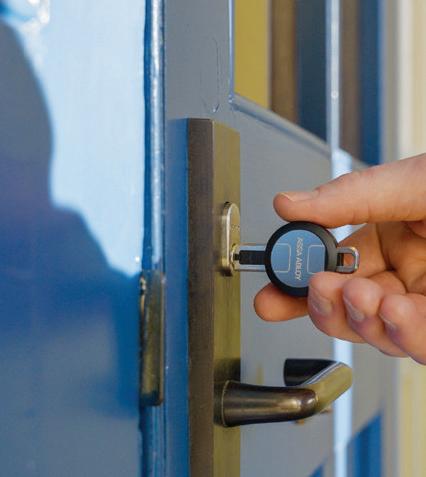


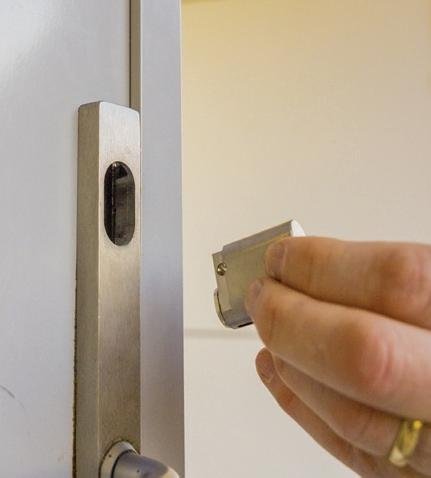
‘With eCLIQ, it still looks and works like a traditional key –locking and unlocking manually,’ says Mike Begg, co-owner of Begg Security. ‘We simply replaced the existing door cylinders with the electronic cylinders, set up and programmed
Begg Security had it up and running in just one day, with no interruption to the school’s activities. ‘I was very pleasantly surprised by just how quick and easy the transition was and how well it was organised and managed,’
Contractors can be granted temporary access by the single key for all their needs. With external doors secured, the school plans to switch internal doors to eCLIQ next.
‘The part which really impressed me was the ease of getting the system up and running, and then also the fact that there were no issues. .’ says Mike Wright.

By Naomii Seah , Industry Reporter
Schools are subject to minimum workplace first aid standards, as set by WorkSafe.
School boards must ensure there are first aid kits available, and staff are trained in first aid provision. This is part of meeting the health and safety requirements and fulfilling a duty of care to the whole school community. Specific first aid requirements generally vary by school roll, and activities. Below, we detail the first aid requirements for schools, the materials needed in a first aid kit, and available training options for staff and students.
WorkSafe sets out guidelines that school boards can use when reviewing or updating health and safety policies and ensuring compliance.
Questions for boards to consider include whether there are enough first aid kits and facilities – has the school roll grown or shrunk in size? Have upgrades or expansions to school property changed the distribution of students and
Basic supplies to include in a school first aid kit include, but are not limited to:
• Disposable gloves.
• Sterile saline solution, or other suitable wound washing agent.
• Safety pins, bandage clips, tape, or other means of securing wound dressings.
• Sterile wound dressings, including plasters.
• Rolls of stretchable bandage.
• Triangular bandage or other means of immobilising an injured upper limb.
staff across the grounds? What about construction or damaged areas that create choke points or restrict movement around the property?
Such considerations mean the location and number of
• Scissors.
• Tweezers.
• Cold pack.
• First aid manual.
• Contact details for the National Poisons Centre (0800 POISON or 0800 764 766), and for Healthline (0800 611 116).
• Non-prescription, topical medicines like antiseptics and insect bite spray for minor wounds.
first aid kits may occasionally change to ensure timely access in case of emergency.
First aid equipment should be easily accessible, with the goal of access within minutes of an emergency.
This means there should be a dedicated first aid kit in places where high risk activities are happening, such as a science lab or food tech room.
Changes to school roll size will also impact the number of staff required to be trained in first aid. Some schools choose to train all or most of their staff in basic courses to ensure a first aid worker will also be rostered on. If someone requires first aid at school, or during a schoolrelated activity, boards are also required to record the incident and keep a register.
Schools must also ensure a first aider and kit are available on EOTC activities. School boards are legally obligated to ensure mobile first aid kits are taken for every excursion, and that an appropriately trained person is assigned responsibility of the supplies.
A full list of EOTC health and safety requirements can be found on the Tāhūrangi - New Zealand Curriculum website.
Boards are also responsible for ensuring first aid supplies are kept clean, tidy and accessible for use. P40

In schools, where students are building the foundations for life, it’s never too early to learn essential skills like first aid and health and safety. These aren’t just “extra” lessons, they’re life skills that build confidence, independence and responsibility.
Imagine a student on the sports field who knows exactly what to do when a teammate sprains an ankle, or even collapses. That kind of confidence can make a big di erence in an emergency. Fun fact: first aid training doesn’t just teach skills; it doubles young people’s confidence to step in and help when it ma ers most. In a survey of New Zealand high school students, 70% had received some form of first-aid training, and of those, 75% said they wanted to learn more!
Beyond emergencies, health and safety training also prepares students for their first jobs. Understanding hazards, workplace responsibilities, and how to keep themselves and others safe are abilities employers value highly and skills that stay with students long a er school.
Teachers are o en the first responders in schools. Whether it’s a playground fall, an allergic reaction, or a more serious incident. With up-to-date first aid training, teachers can act quickly,



keep students calm, and potentially save lives. It also reassures parents, knowing their children are supported by sta who are trained and confident in handling the unexpected.
LifeCare is one of New Zealand’s most trusted training providers, with more than 30 years of experience and over 4,800 Google reviews nationwide, maintaining an outstanding 4.9-star rating. We’ve trained thousands of teachers and students across the country, delivering NZQAaccredited courses that are practical, interactive, and tailored to schools.
Whether you’re refreshing your sta ’s first aid or preparing your senior students for the workplace, LifeCare ensures learning is engaging, relevant and memorable.
Equipping your school with first aid and health and safety training is about building a culture of care where both students and teachers are prepared and feel empowered. It’s a powerful ripple e ect that extends beyond school se ings to benefit entire communities.
Contact LifeCare today to book First Aid courses for teachers and First Aid and Health & Safety courses for students.
To learn more about our training for schools, visit lifecare.co.nz.


Trained over 14,000 students across 650+ schools nationwide
NZQA unit standard-based First Aid and Health & Safety courses that offer real credits and real-world readiness.
Engaging, scenario-based learning courses designed specifically for school environments. For students and teachers.
Proudly, the only NZ training provider with 4,800+ Google reviews and a 4.9-star rating nationwide.
Contact us to plan the NZQA training for your school today!
lifecare.co.nz
Contact: Barbara-Ann Sharp Account Manager - Education & Corporate M: 021 945 432 E: bas@lifecare.co.nz

Generally, materials should be kept in a waterproof and dustproof bag which is clearly identified as a first aid kit.
First aid kits should be routinely monitored to ensure items have not expired, sterile items are still sealed, and there is an adequate supply.
Mobile first aid kits which are taken to sports tournaments or EOTC activities may need additional items like splints, inhalers, or anaphylaxis kits. Items should be replaced as soon as possible if used, and it is good practice to have a current inventory list which is signed and dated after each check.
Brad Smith, quality training manager at LifeCare said schools should also consider a CPR resuscitation mask on school grounds. When
travelling, schools should have multiples of all the essential items in a kit, as well as “wound dressings of various sizes, fabric plasters including large, fingertip and knuckle, gauze swabs, nonadherent dressings, eye pads, splinter probes and a sealable bag to put bio-waste in.”
There are several first aid training options available, tailored to varying skill and responsibility levels. Most providers off er an NZQA accredited foundational course, which is a full-day program designed to ensure compliance with minimum health and safety standards.
Courses should include basic life-saving skills like CPR, using an AED, managing bleeding, recovery positions and managing illness. Some providers off er hybrid courses,

where some components are completed online. This may be appealing to teachers who are juggling busy workloads.
These foundational courses will usually come with a certificate to show the participant has gained essential first aid skills and training. To keep this qualification valid, refresher training must be completed every two years. Most providers can arrange onsite trainings, especially for larger groups. Most also have regular public courses available, where schools with smaller rolls and fewer staff can also access first aid training.
Chris Shimmin from New Zealand Red Cross said schools should look for courses that are NZQArecognised when selecting first aid training for staff.
“This provides assurance that
the provider meets quality standards, the training is based on the latest first aid guidelines, and that instructors are appropriately qualified. NZQA-accredited courses are also based on three unit standards that build progressively. A comprehensive training experience would include all three, since no one can predict the type of first aid situation they might face.”
Mr Smith agreed that an NZQA-accredited course was important, as it “prepares teachers and support staff to respond to playground injuries, classroom incidents, or field trips. Staff supervising sports, camps, or off site activities may need more advanced training, and options range from half-day revalidation to full-day courses, so they can be balanced against teaching schedules.”

















Beyond simple compliance requirements, schools may choose to offer first aid courses to students.
Mr Shimmin said: “An NZQA accredited first aid course could count toward an NCEA qualification, and/ or improve a young person’s chances of employment with a first aid certificate.
“First aid is important for
students because it equips them with essential skills that, while hopefully rarely needed, can make a critical difference in an emergency. Younger students benefit most from simple, confidence-building activities that help them recognise emergencies and seek help. Older students may engage with structured NZQA-based training, which provides life skills, formal recognition, and
First Aid for the School Environment - 4 Hour course held at your premises at a time to suit you. This is a cost-effective course designed to give teachers confidence to cope with medical emergencies and accidents at school or on surburban trips. This fits with staff development and is based on Ministry of Education guidelines.

a practical addition to a CV.”
Mr Smith added: “High schools and teenagers are often exposed to greater risk as they are risk takers themselves. With risk often comes injury and first aid situations, so it’s important to learn the fundamentals of foundation first aid.
“The comprehensive course may also suit student needs. Covering topics like head and spinal injuries, and hyper- or hypothermia could be useful for outdoor students.”
There are a variety of specialised first aid courses which address specific scenarios that teachers and schools may find useful.
For schools with a vocational branch, there are firstaid courses geared toward trades safety. Other providers have specialised courses for mental
health first aid. These courses may include useful skills like recognising when someone is in distress, how to engage in conversations, understanding legal obligations, conscious and unconscious bias and knowing when to refer, and available referral options.
Mr Shimmin said psychological first aid is becoming more widely recognised as a valuable course to build emotional resilience.
“First aid is not only about physical care. Psychological first aid—emotional and practical support to reduce distress and foster the ability to adapt, cope, and recover—helps staff and students support one another in times of crisis. Teaching these skills from a young age builds resilience and normalises seeking help for mental wellbeing.”


Schools off ering extensive EOTC programs or supervising outdoor extracurriculars may want to consider training staff in outdoor first aid. This is especially important for schools who off er multi-day excursions; outdoor first aid trains people to care for others when help is not available for long periods. Finally, schools serving younger students should investigate training their staff in special child first aid courses.
Simon Barnett , Head of Public Training and Medical Products at Hato Hone St John noted that “children are


not just small adults. They are physically, emotionally and developmentally diff erent, which means that their first aid needs are diff erent too.
“A fi t-for-purpose child first aid course, designed for professionals who work with children every day, means staff have training that is directly relevant to the people they look after. These courses off er practical, hands-on learning and realistic workplace scenarios that meet workplace requirements. Group sessions enable whole teams to upskill together.”















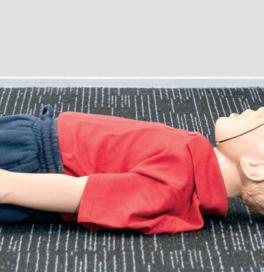
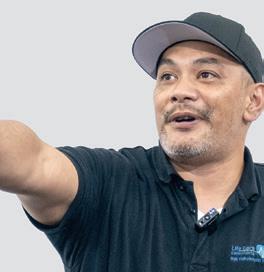





















































When it comes to children, rst aid isn’t a one size ts all. That’s why we’ve refreshed our Child First Aid course, designed for teachers and professionals working with young and primary-aged children. It’s just one day, in-person and meets Ministry of Education requirements.




































With plenty of hands-on learning and real classroom scenarios, you’ll walk away feeling con dent and ready to step in when it really counts.


Bk now

























By Gemma Easton , Editor
Warm weather and sunny days make going outside a very tempting prospect. But if your school doesn’t offer ample shady places for learning, playing, and relaxing, you might have to stay inside this summer.
Shade structures, including covered learning areas, shade sails, umbrellas, and shelters can all be installed around your school.
Protecting areas from sun, wind and rain, shade structures can improve the functionality of outdoor spaces, making them usable year-round and in all weather conditions.
With the summer holidays not far away, now might be the perfect time to plan a shade structure project for your school.

As with all projects, careful planning will ensure your shade structure is fit for purpose and lasts a long time.
When planning shaded areas, consider the orientation of the shade structure, and height and depth of the space to ensure UV radiation is blocked without making the space too cold. Also consider if falling leaves or branches from nearby trees
might fall on the structure, and make sure any anchor points are not a trip hazard. Importantly, in Aotearoa New Zealand, structures should provide warm shade, rather than eliminating the heat of the sun altogether.
Katrina Evans from Archgola said when planning for long lasting shade solutions, it’s important to select a company who can offer certification by a structural engineer for both
its design and materials. “This is essential to ensure that the canopy can withstand the wide range of weather conditions we are now more regularly experiencing in New Zealand. UV Protection is usually inbuilt in the roofing solution, and eliminates ninety-nine percent of harmful rays.
“Second, we would recommend considering the design of the structure carefully. Is the location warm, sheltered or low light and windy? Is there an opportunity for good inside-outside flow? This will ensure you get lots of use and benefit from the investment.
“Third, use a company that is both experienced in providing a quote and design in the format that is required for funding approval.”
Additionally, your planning should include measures to minimise impacts on your school community during the project. Staff and students should be kept well away from
If your school doesn’t offer ample shady places for learning, playing, and relaxing, you might have to stay inside this summer
the area, and contractors should have clear access for bringing materials on and off site. If work is expected to be noisy, consider whether some classrooms close to the work site need to be left empty.
Scheduling work for holiday periods and weekends where possible will help minimise disruption for staff, students and families.
A variety of shade solutions are available, and choosing the right one for your school will depend on the location and intended use of the space, and weather conditions in your area.
Nick Suckling, CEO at Shade Systems, outlined the variety of shade options available to schools to suit diff erent spaces and purposes.
“Shade sails provide flexible coverage for playgrounds and open spaces, with modern designs that incorporate structural steel supports, anti-climb poles, and independent footings for safety and long-term durability.
“Tensile membrane canopies off er large-span, all-weather protection—perfect for

sports courts, assemblies, and outdoor learning areas.
“Polycarbonate roofing delivers a hard-roof option ideal for covered walkways and outdoor classrooms.
“Modular shade structures work brilliantly for lunch areas, playgrounds, and other high-activity spaces.”
Working with an experienced shade structure manufacturer and installer can help you identify the best shade solution for your specific purpose. Some structures, like shade sails and umbrellas, can be customised to suit your school colours, or blend in with the existing landscape.
“Good shade design goes beyond just blocking the sun,” Mr Suckling said. “Factors such as UV protection, airflow, visibility, durability, weather resilience, and compliance with building codes all matter. Placement is key—structures should be positioned to maximise protection during peak UV times, integrate seamlessly with the site layout, and allow for safe installation. Partnering with an experienced provider ensures the design works as well in practice as it does on paper.”



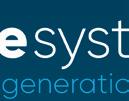




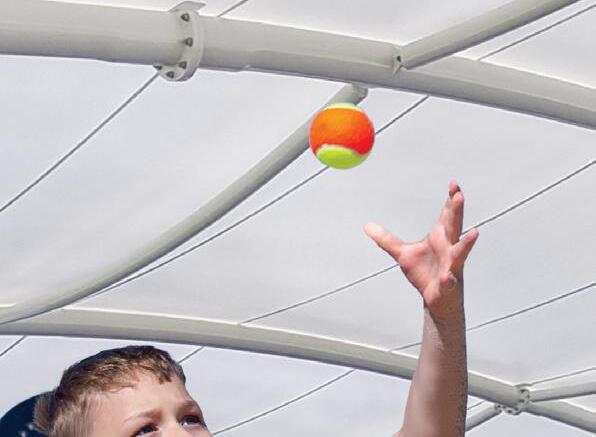



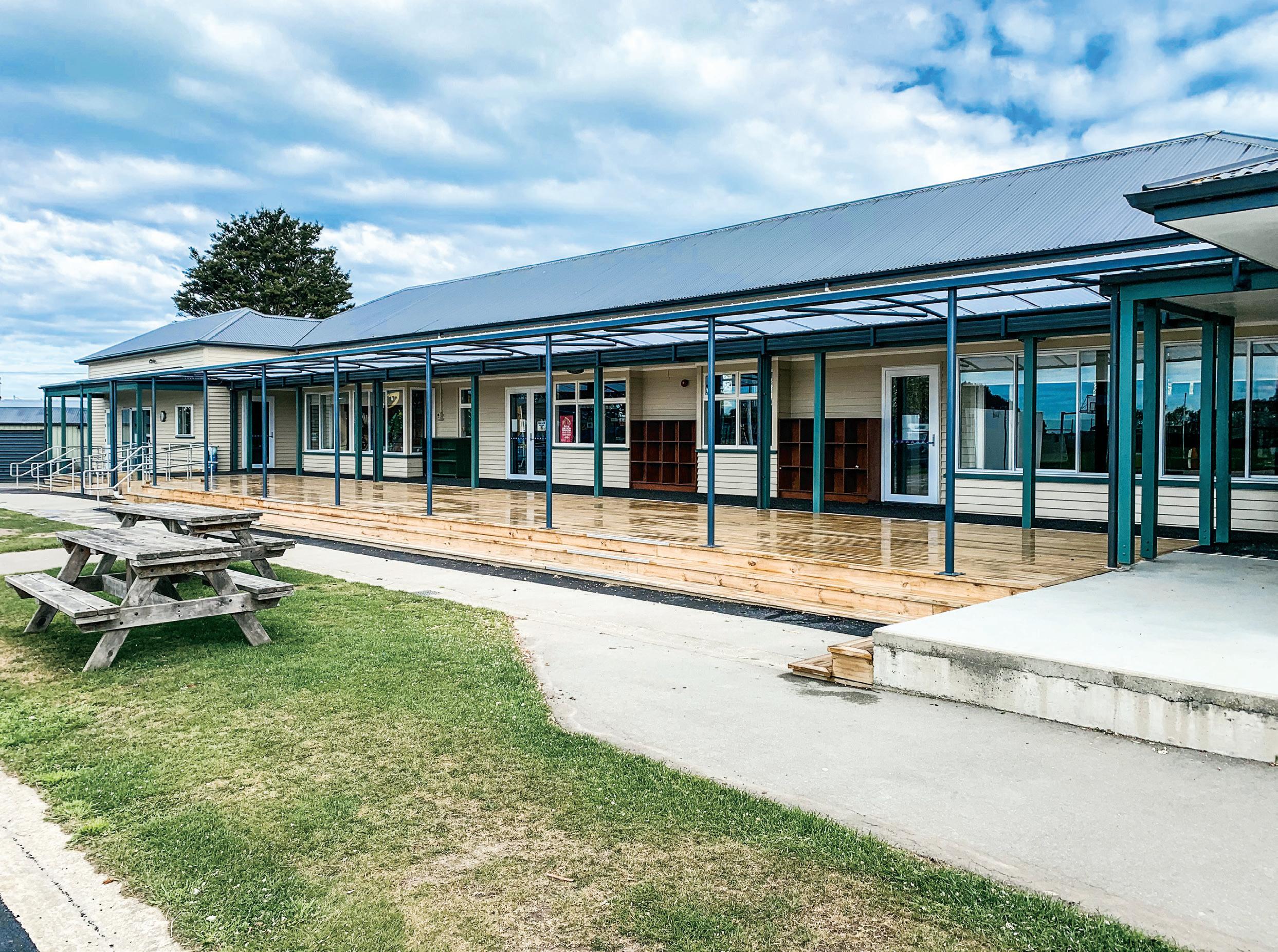

Myriad options are available for you to transform your shaded area into an outdoor classroom, entertainment hub, or sports precinct.
Shade structures can be fitted with IP Paging and PA systems, digital signage and lighting. With these added features, school assemblies and presentations, community events, incursions
and much more can be hosted in these spaces.
Ms Evans said: “Outdoor blinds extend the use of canopies, providing additional weather protection. These are available in either mesh fabric or clear PVC.
“The choice of mesh or clear depends on the main requirement of the space. Mesh fabric reduces glare
and heat in the summer whereas the clear PVC offers greater weather protection.
“It should be remembered that areas under a canopy remain an outdoor space, and do not have the 100 percent weather protection of the inside of a classroom,” Ms Evans said. “Another aspect to consider with blinds is they operate best when the posts are not
too far apart, so if you have a very wide-open space, blinds may not be as suitable.”
Of course, there are some instances where installing a permanent shade solution just won’t work. For school sports days and carnivals, open days, and other outdoor events, portable shade options are available. These include marquees, gazebos and umbrellas.
Customised gazebos in house colours can help foster house spirit and friendly rivalry between opposing teams; school-branded gazebos can be used at community events to increase awareness of your school. Branded gazebos can also lend an air of professionalism to school events.
To get the most out of your potable shade, before investing, think about what it will be used for. Does it need to be
suitable for concrete, gravel or grassed surfaces, and are the appropriate anchoring tools included? How many people will need to fit under it, and how many people will likely be on hand to set it up? Also make sure you have a suitable location to store portable shade structures while not in use.
Nick Suckling, CEO at Shade Systems said the risks of not providing shade— UV exposure, reduced outdoor activity, and lost opportunities—far outweigh the investment in quality, purpose-built structures.
He warned against opting for low-spec or short-term solutions, that can end up costing more over time.
“Overlooking engineering requirements, attaching to unsuitable structures, skipping consent processes, or placing posts where they block movement are mistakes that can lead to safety, compliance, and usability issues. Careful planning prevents these problems and keeps spaces open, safe, and functional.”

Archgola is one of the few Outdoor Shade and Pergola companies to be represented throughout New Zealand.
Meaning, wherever your school is, we can meet you on site and prepare a customised design and quote based on your needs and be back to take care of the installation. Archgola Licensees are independent business
owners who are passionate about creating a customised canopy solution for schools in their respective regions. They understand local weather and prevailing winds and can provide advice on design aspects to consider for your outdoor space.
That’s a double win – you get the best local service, and a New Zealand made customised canopy and outdoor blinds, installed by professionals.


We know our Licensees are doing a great job as a large number of our customers come to Archgola as a referral. There’s nothing like seeing a finished canopy at another school or ECE to make you want one at your school. We’ve been around for over 25 years and have thousands of happy customers – there is bound to be an Archgola you can view near you.
If you are planning for a covered outdoor learning space, call 0508 2272 446 to get in touch with your local Archgola Licensee today! or visit archgola.co.nz We’d love to have a chat.
